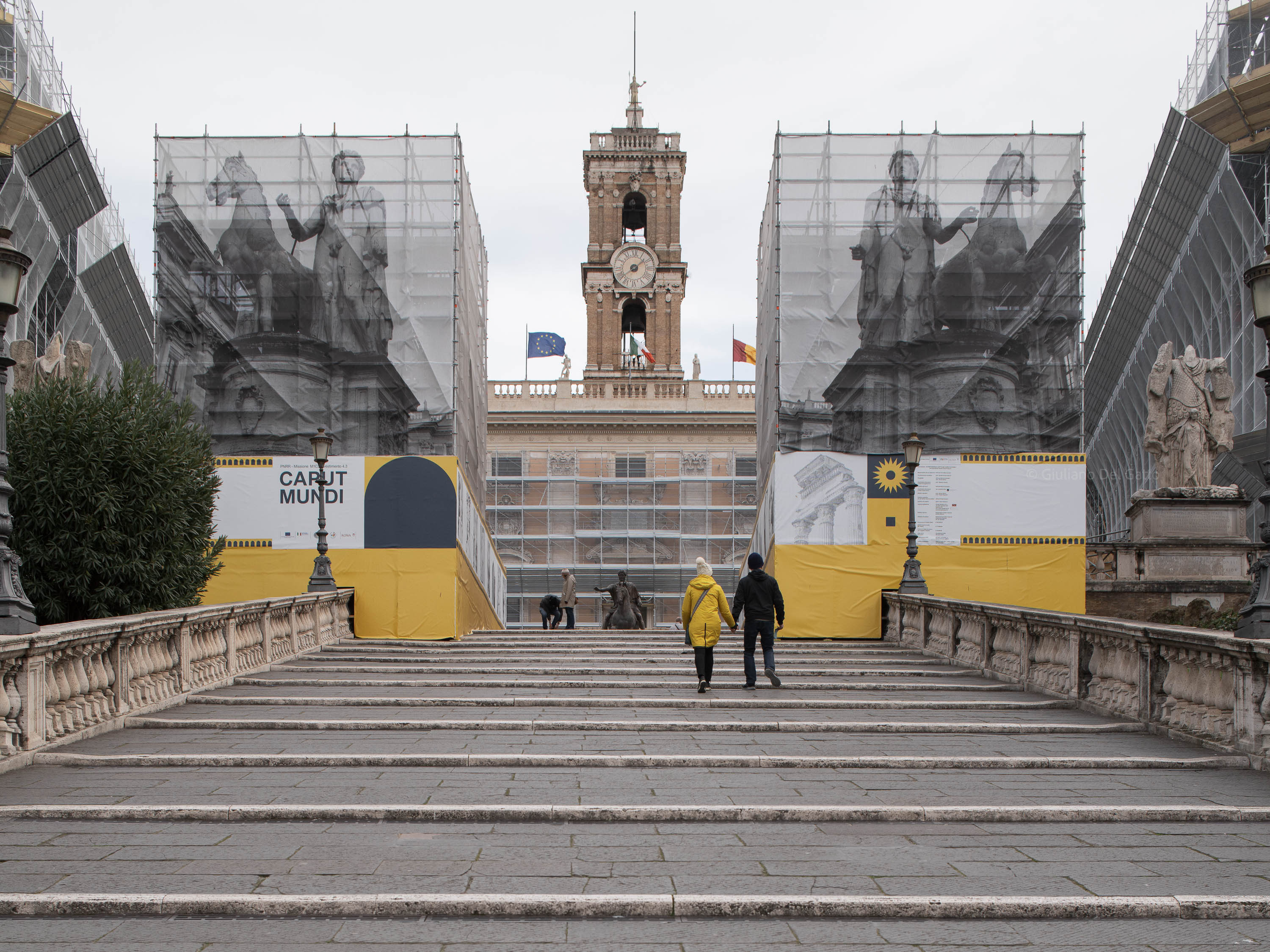
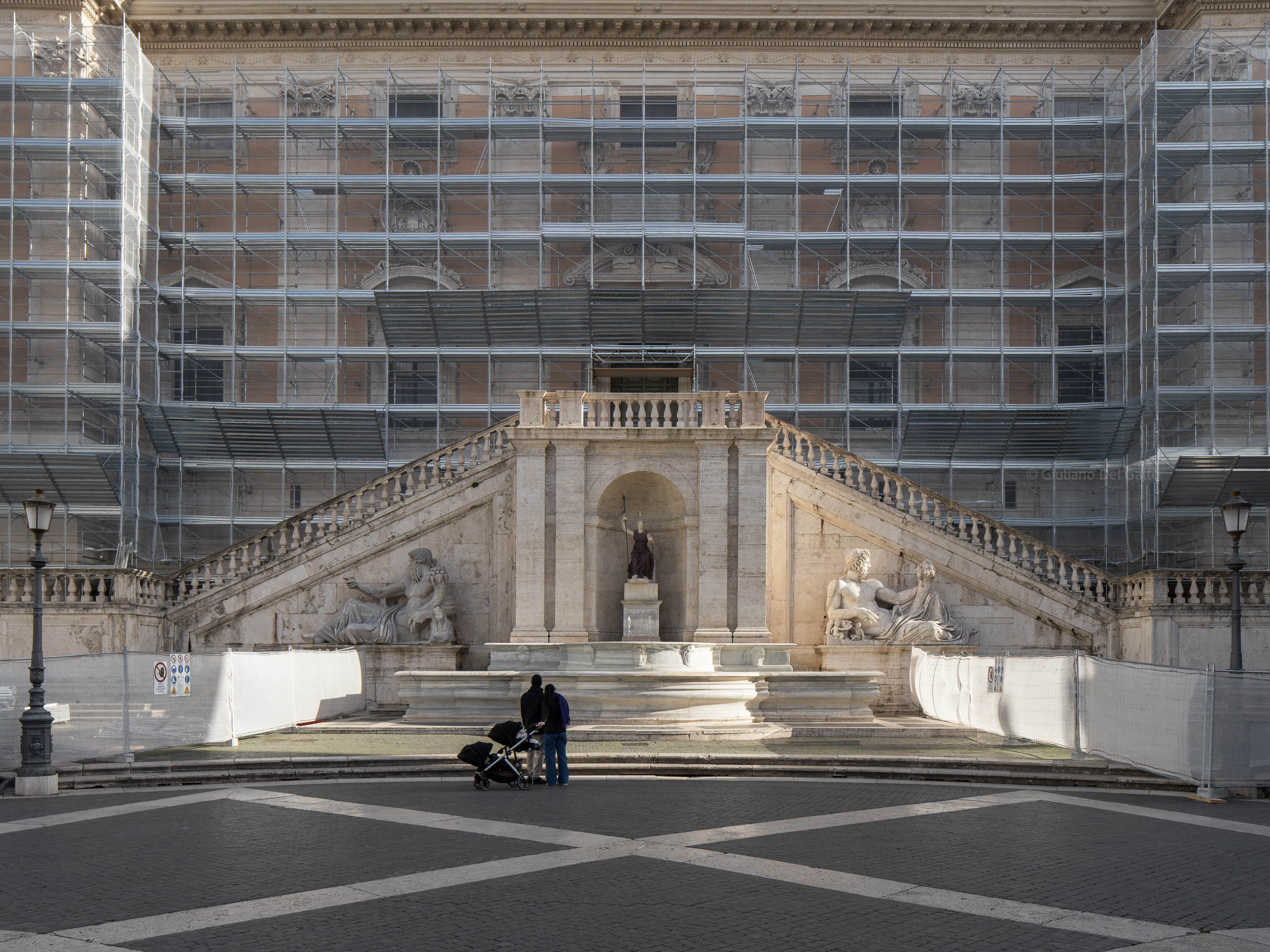
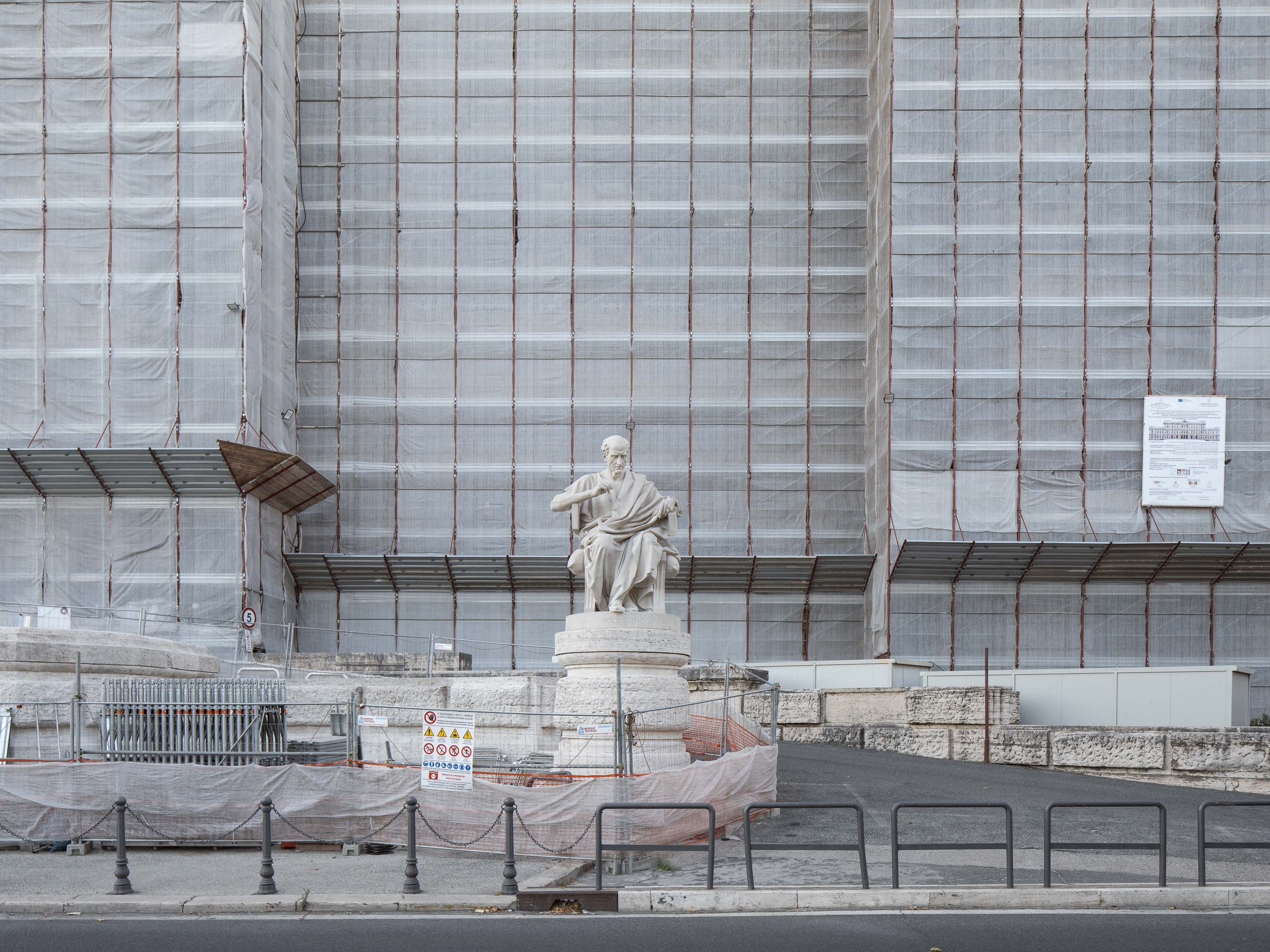


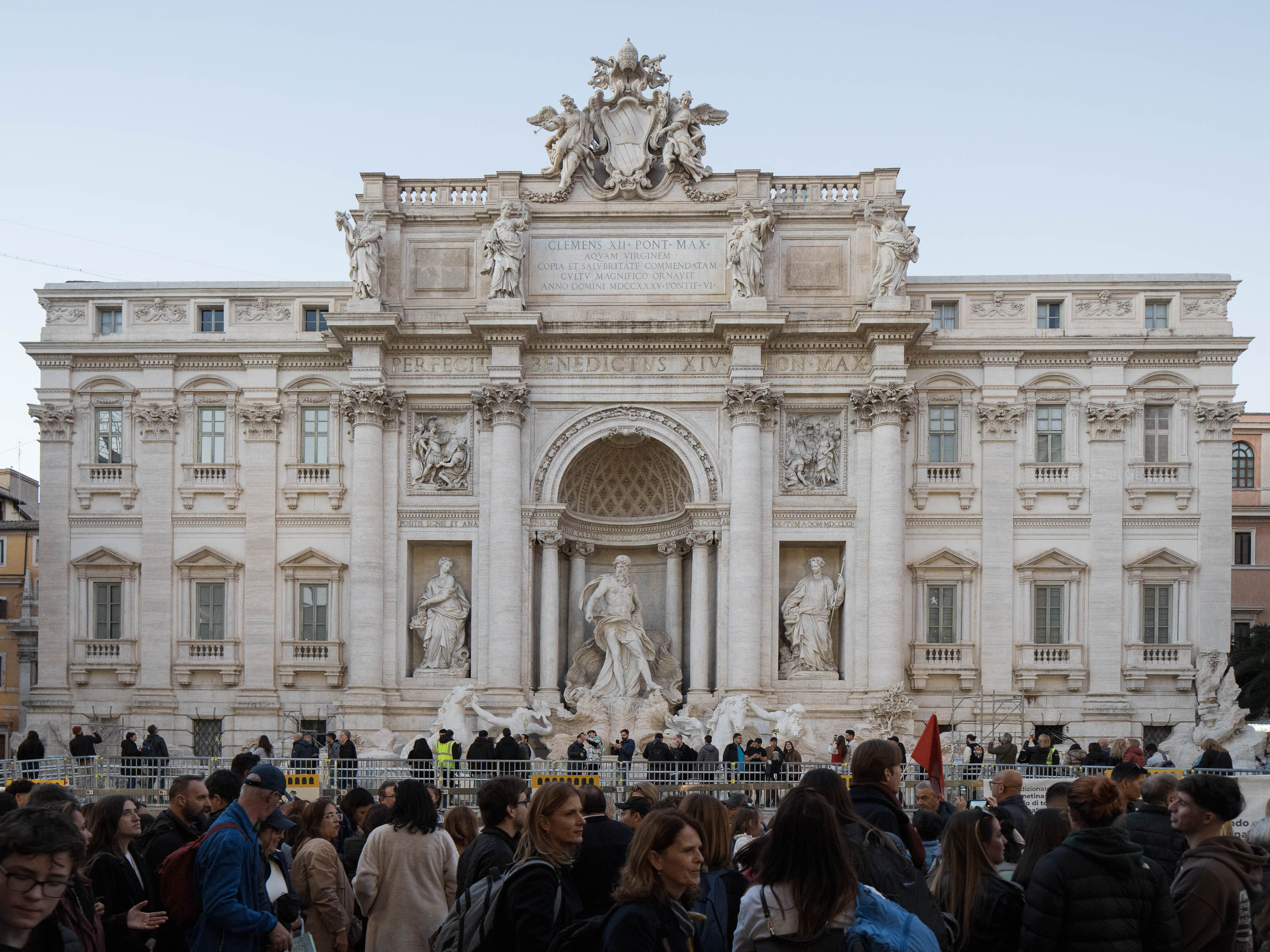
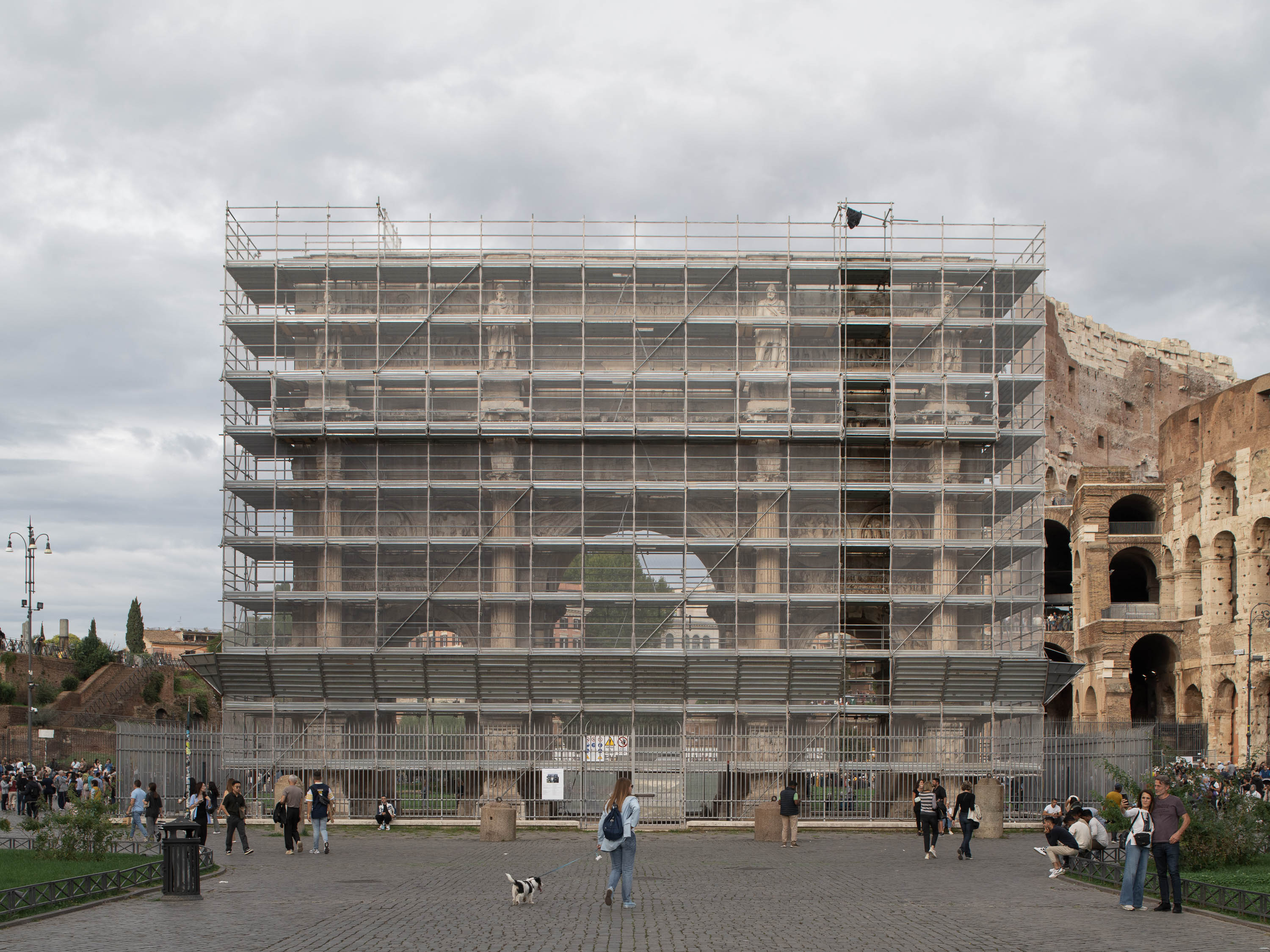

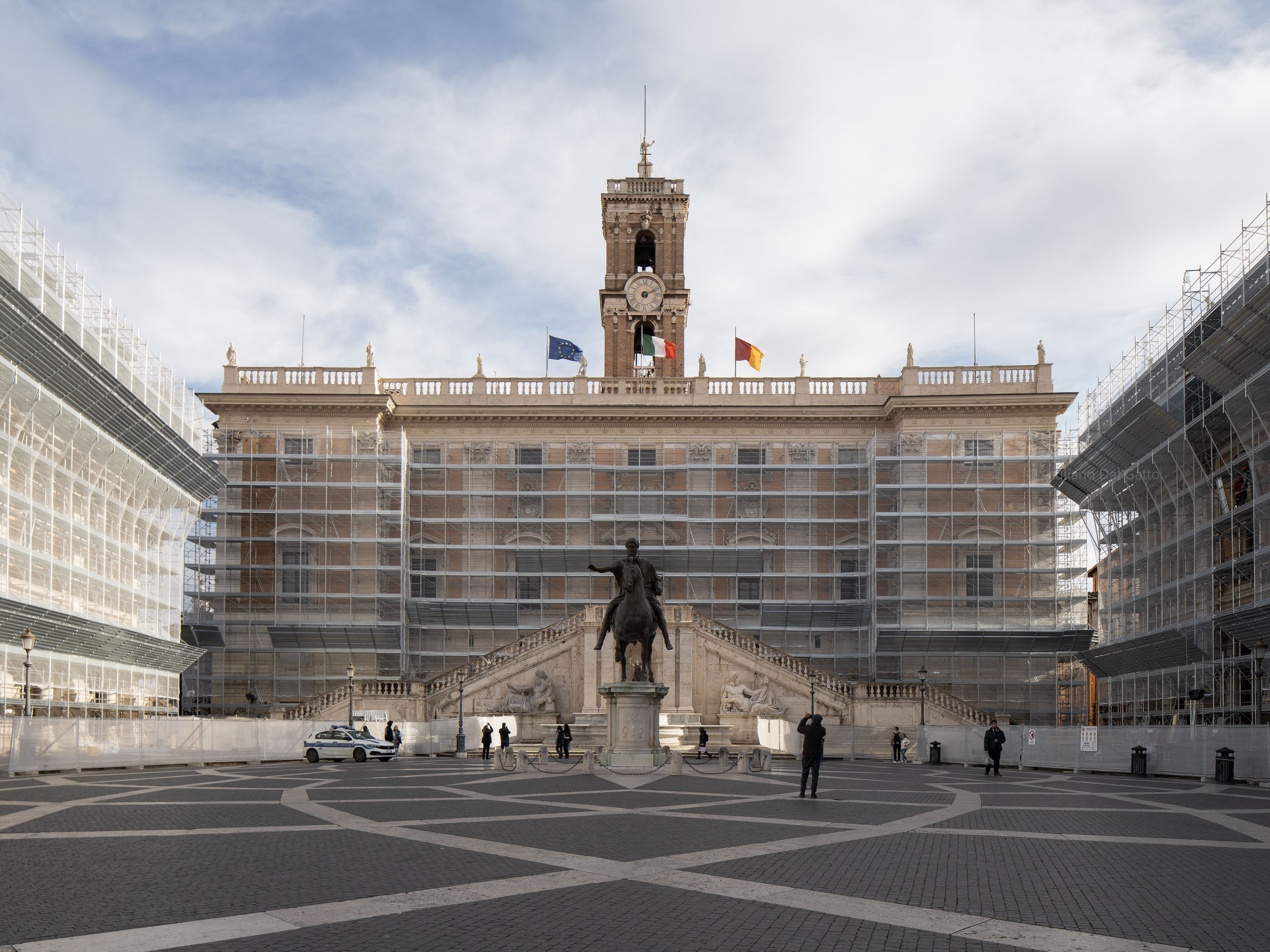
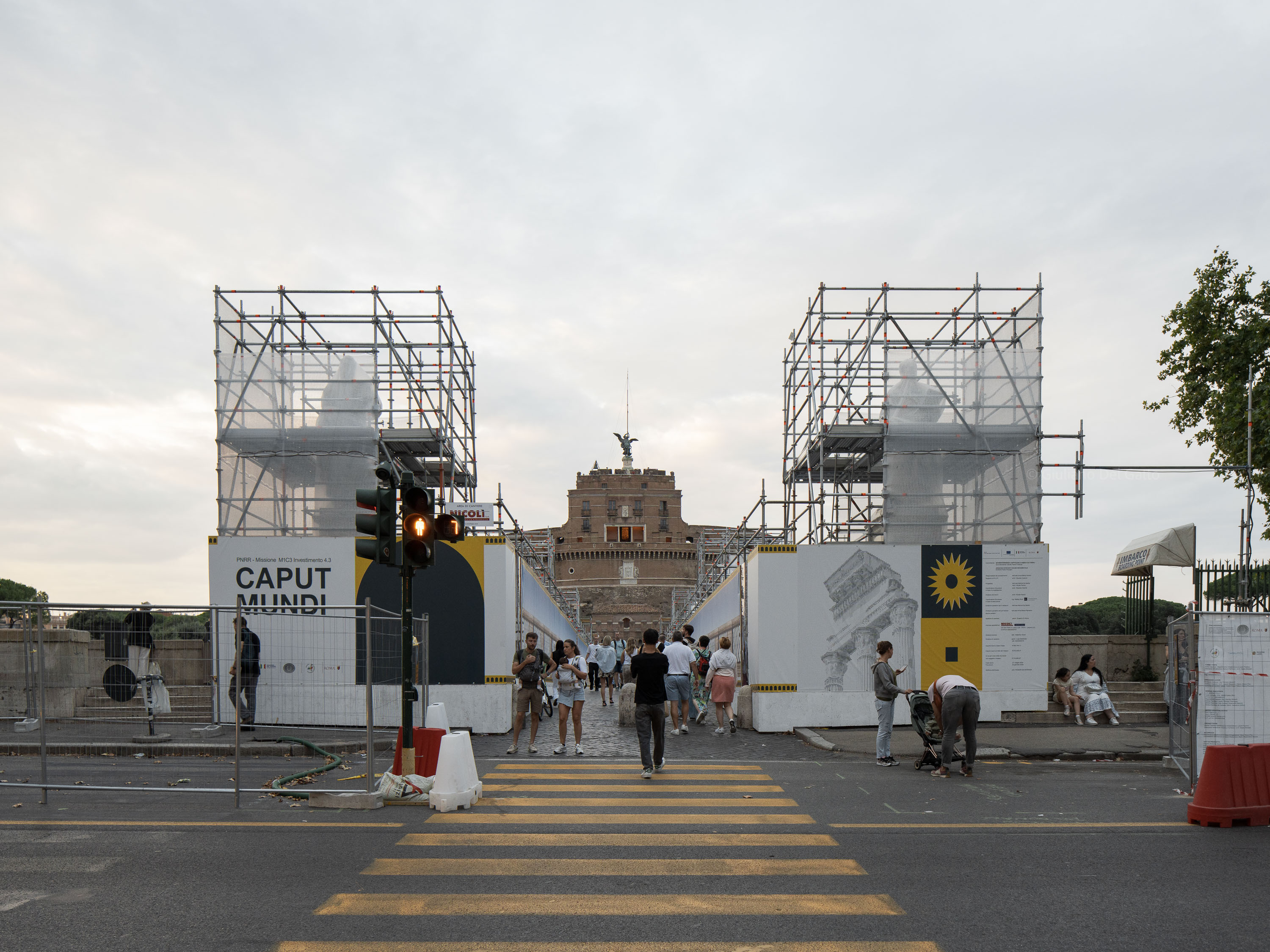




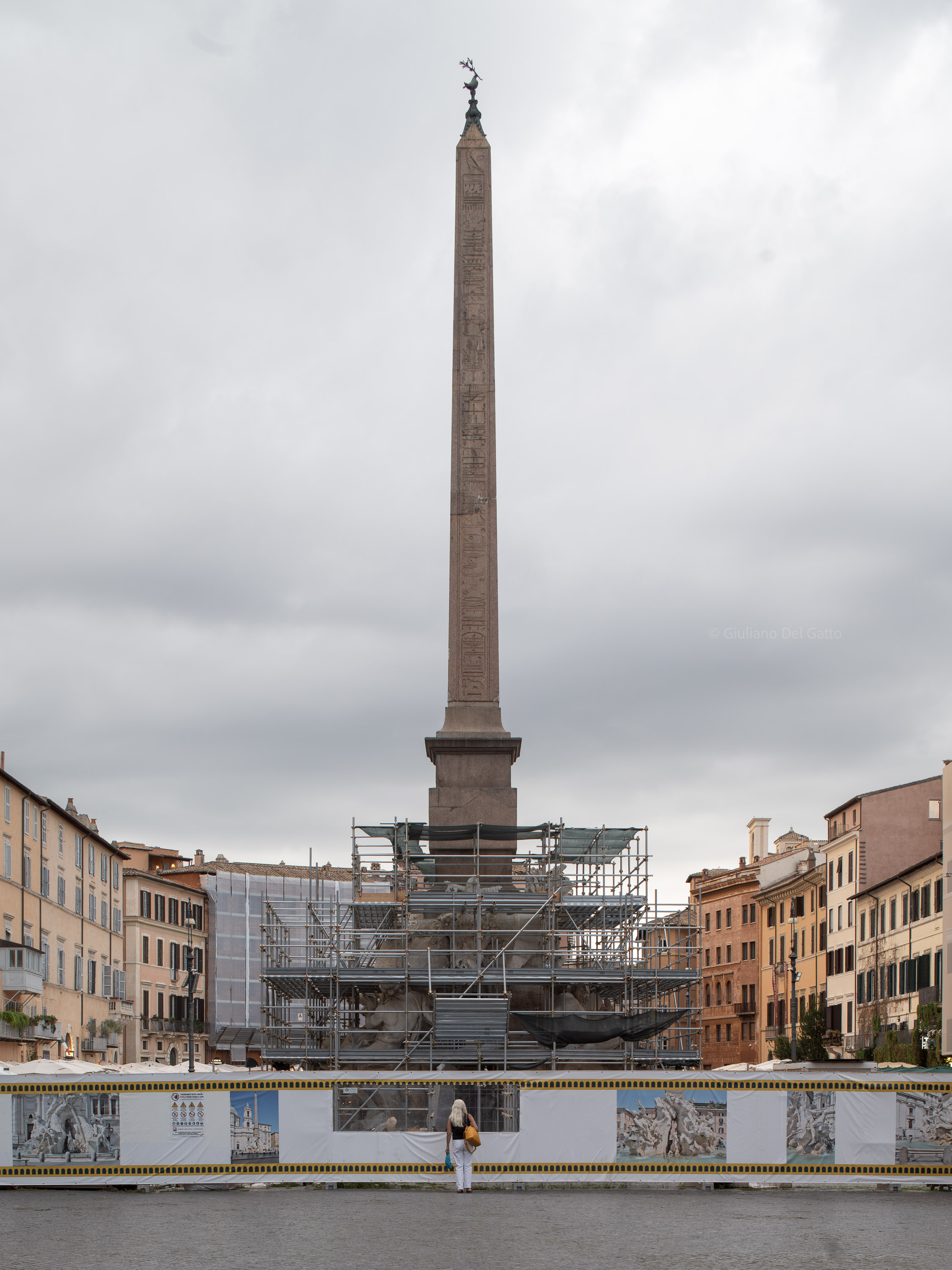


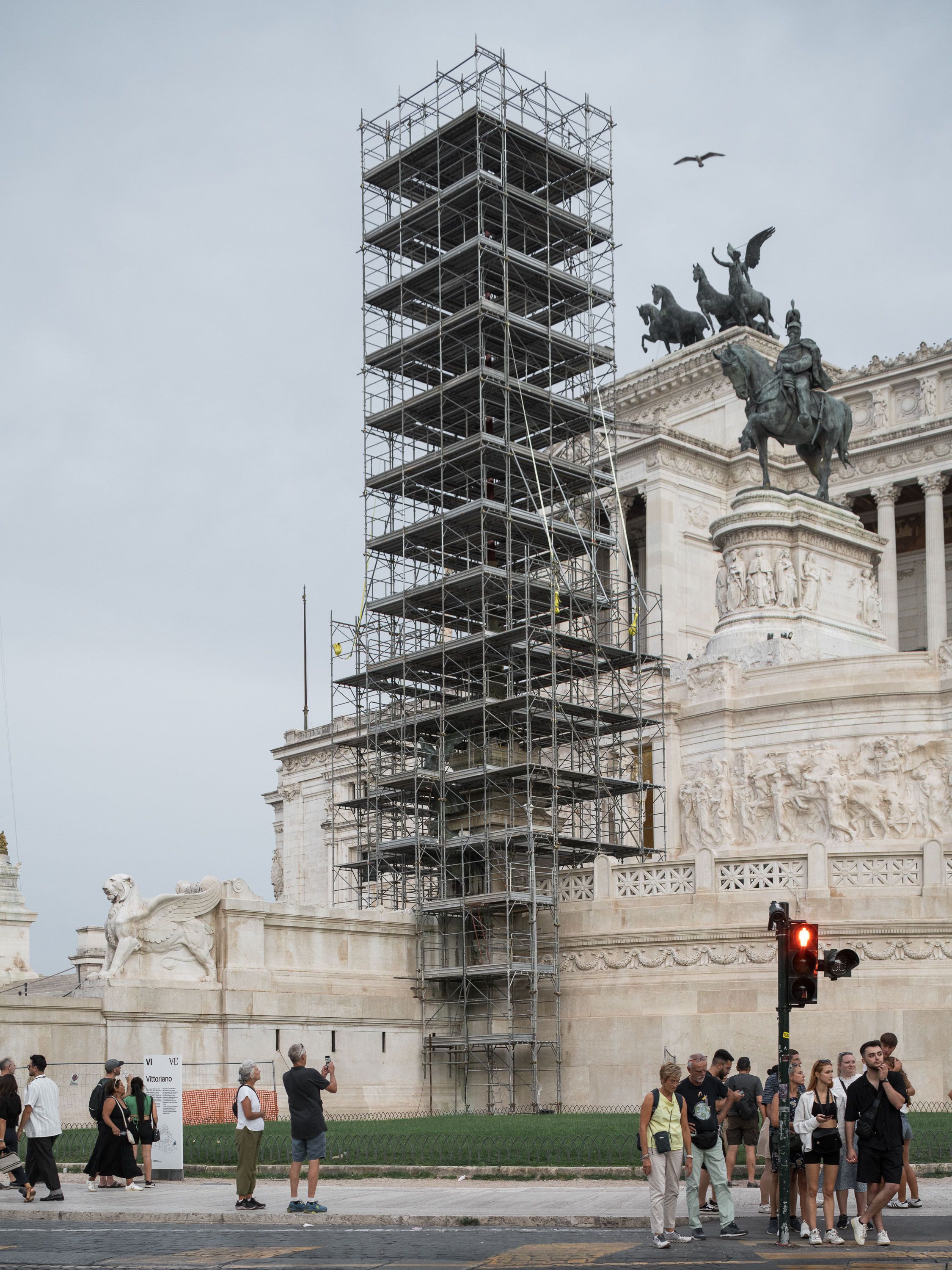


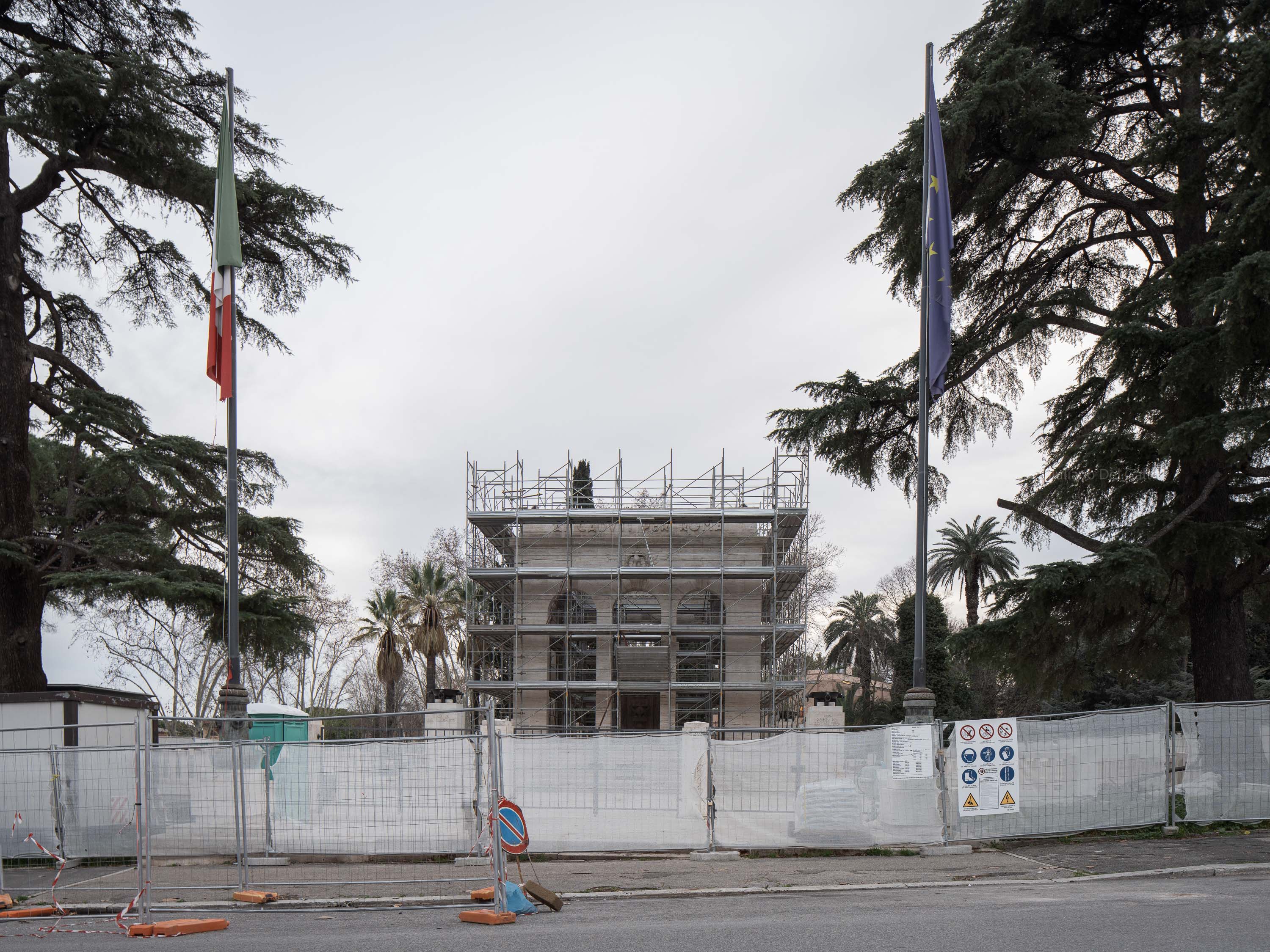









Caput Mundi
Rome 2024 - 2025ENG - Rome is preparing for the Jubilee of 2025 with a major urban redevelopment plan to modernize the city while preserving its extraordinary historical legacy. The photographic project aims to tell the story of this transformation through images that highlight the fervor of the preparations: roads being closed and resurfaced, monuments restored to their former glory, and infrastructure upgraded to accommodate millions of pilgrims.
The goal of this work is to document the dynamism of the construction sites and celebrate the adaptability of a city that has been a crossroads of culture and spirituality for millennia. Through the photographic lens, the dialogue between modernity and tradition, between the urgency of the present and respect for the past, is explored. This visual journey chronicles the progress of a city rich in history, ready to welcome the world on one of its most significant anniversaries.
ITA - Roma si prepara al Giubileo del 2025 con un grande piano di riqualificazione urbana, per modernizzare la città pur preservandone la straordinaria eredità storica. Il progetto fotografico si propone di raccontare questa trasformazione attraverso immagini che mettono in evidenza il fervore dei preparativi: strade che vengono chiuse e riasfaltate, monumenti restaurati per ritrovare il loro antico splendore, infrastrutture potenziate per accogliere milioni di pellegrini.
L’obiettivo di questo lavoro è di documentare il dinamismo dei cantieri e celebrare la capacità di adattamento di una città che da millenni è crocevia di cultura e spiritualità. Attraverso l’obiettivo fotografico, si esplora il dialogo tra modernità e tradizione, tra l’urgenza del presente e il rispetto per il passato. Questo viaggio visivo racconta il progresso di una città ricca di storia, pronta ad accogliere il mondo in una delle sue ricorrenze più significative.
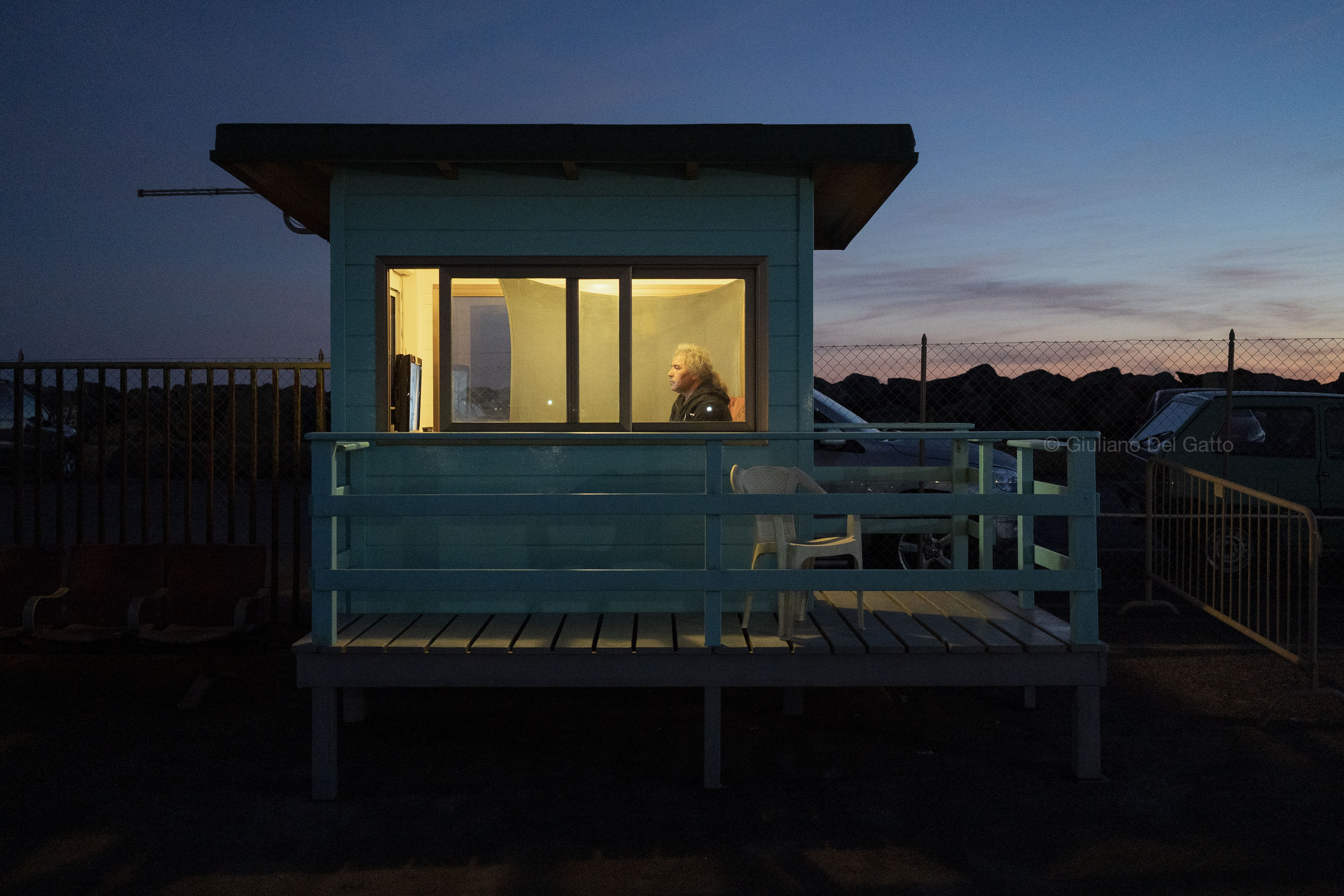



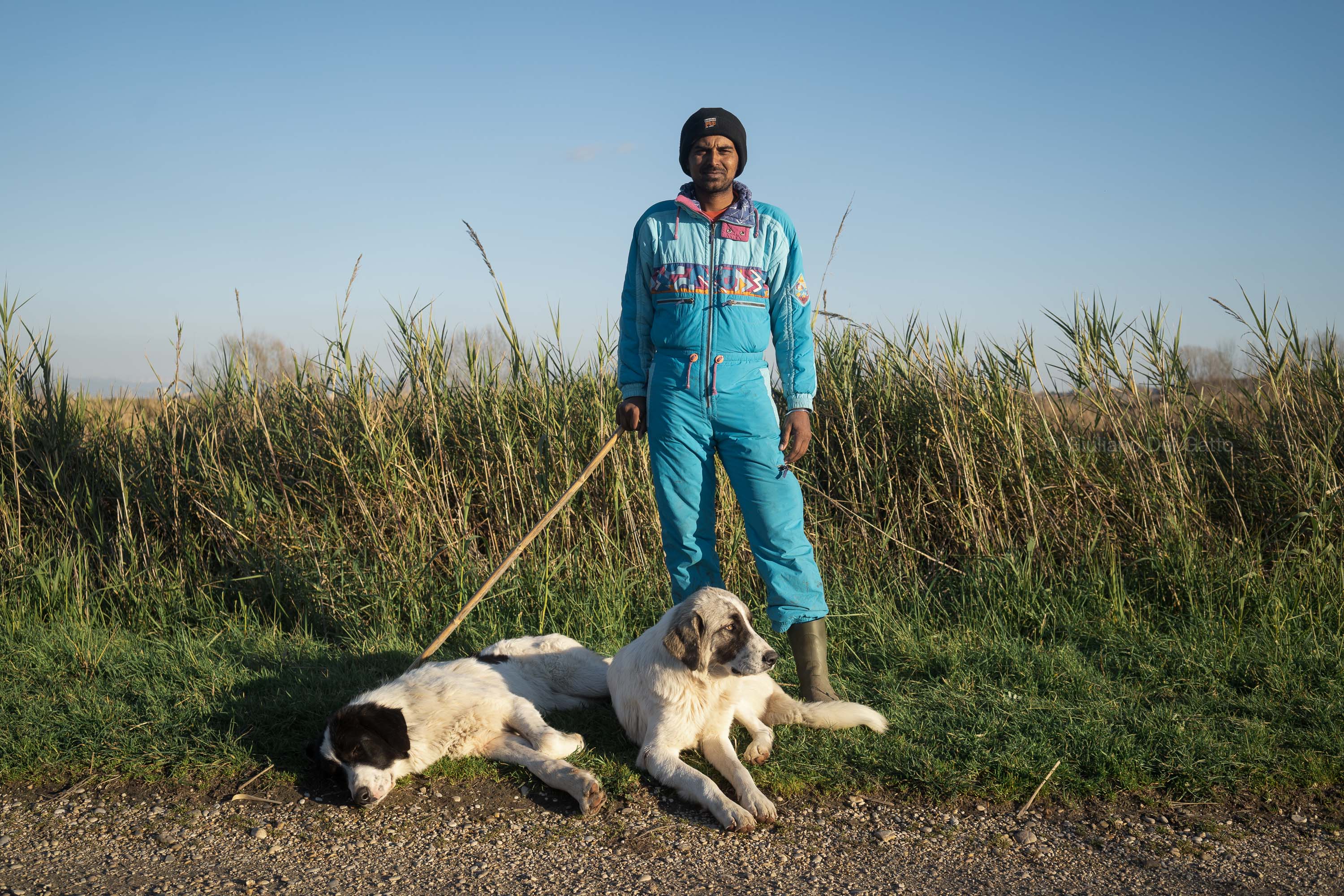








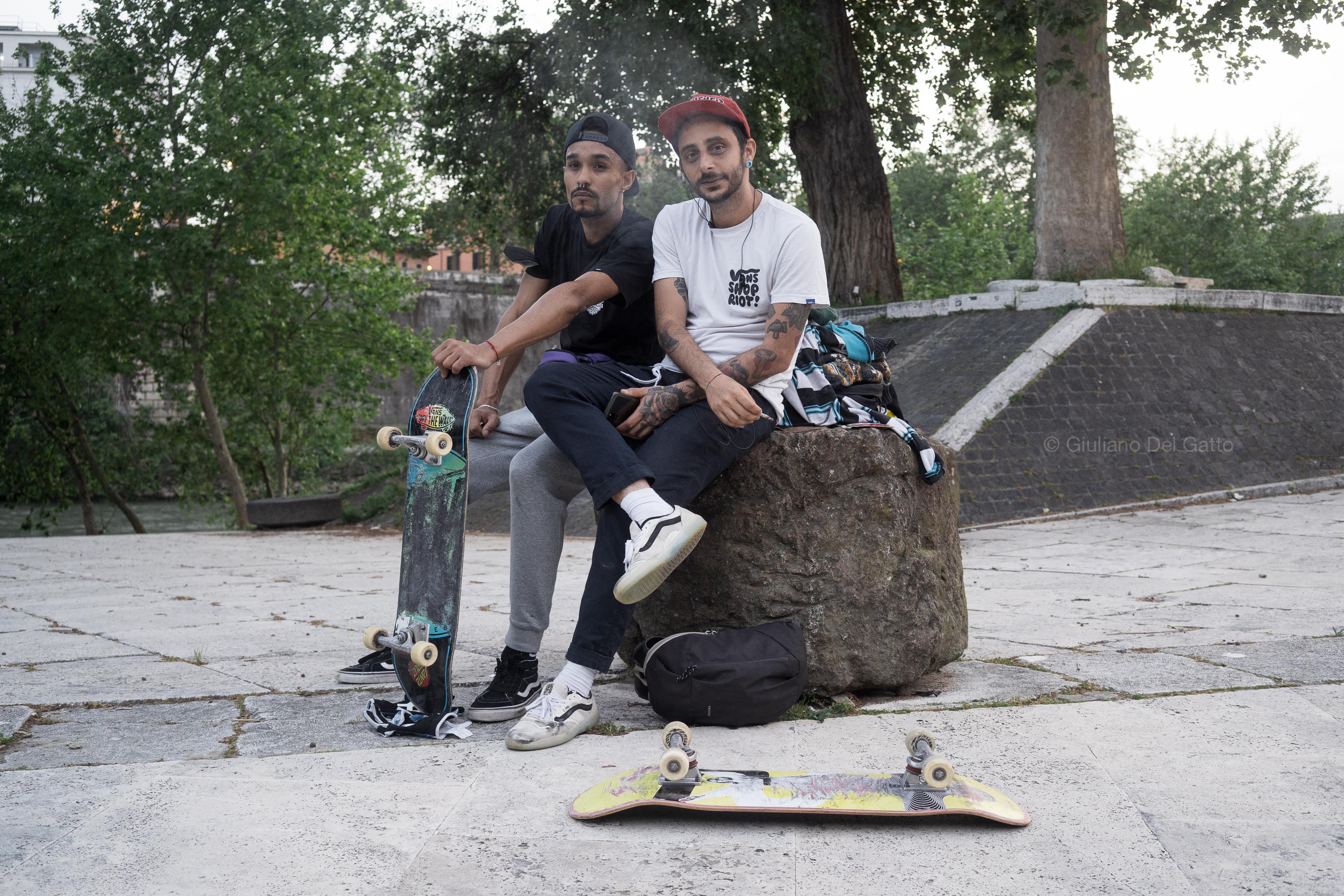



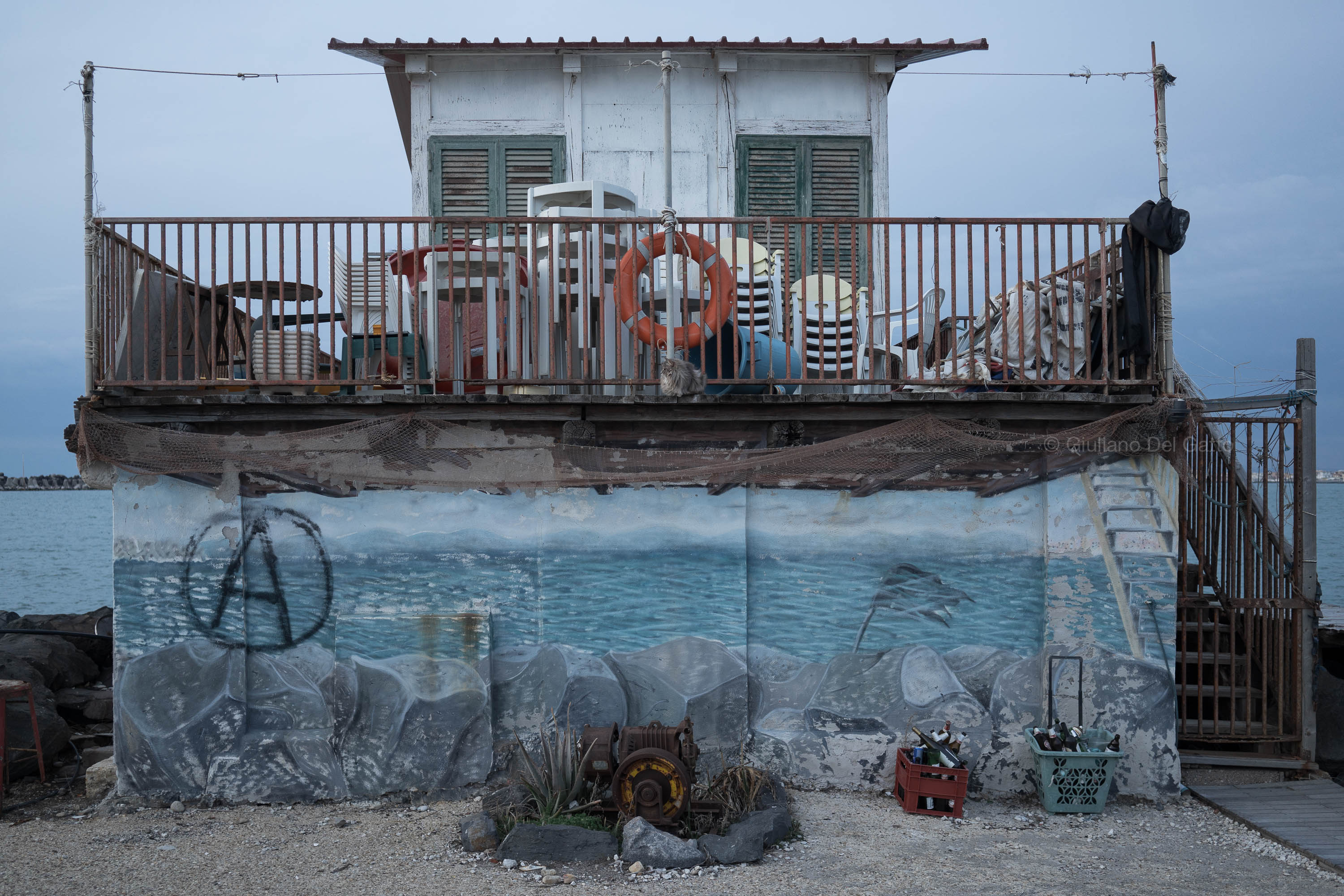



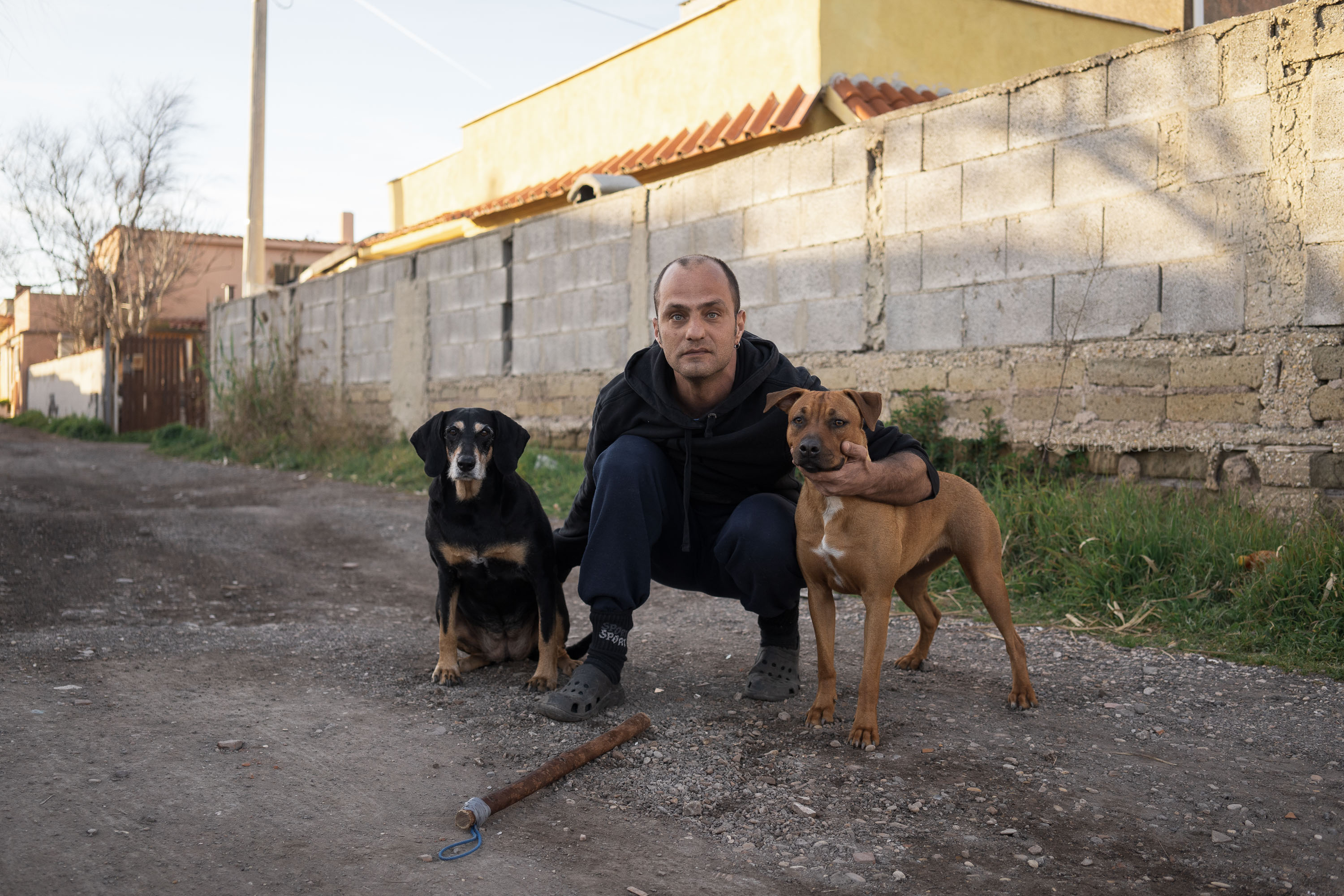



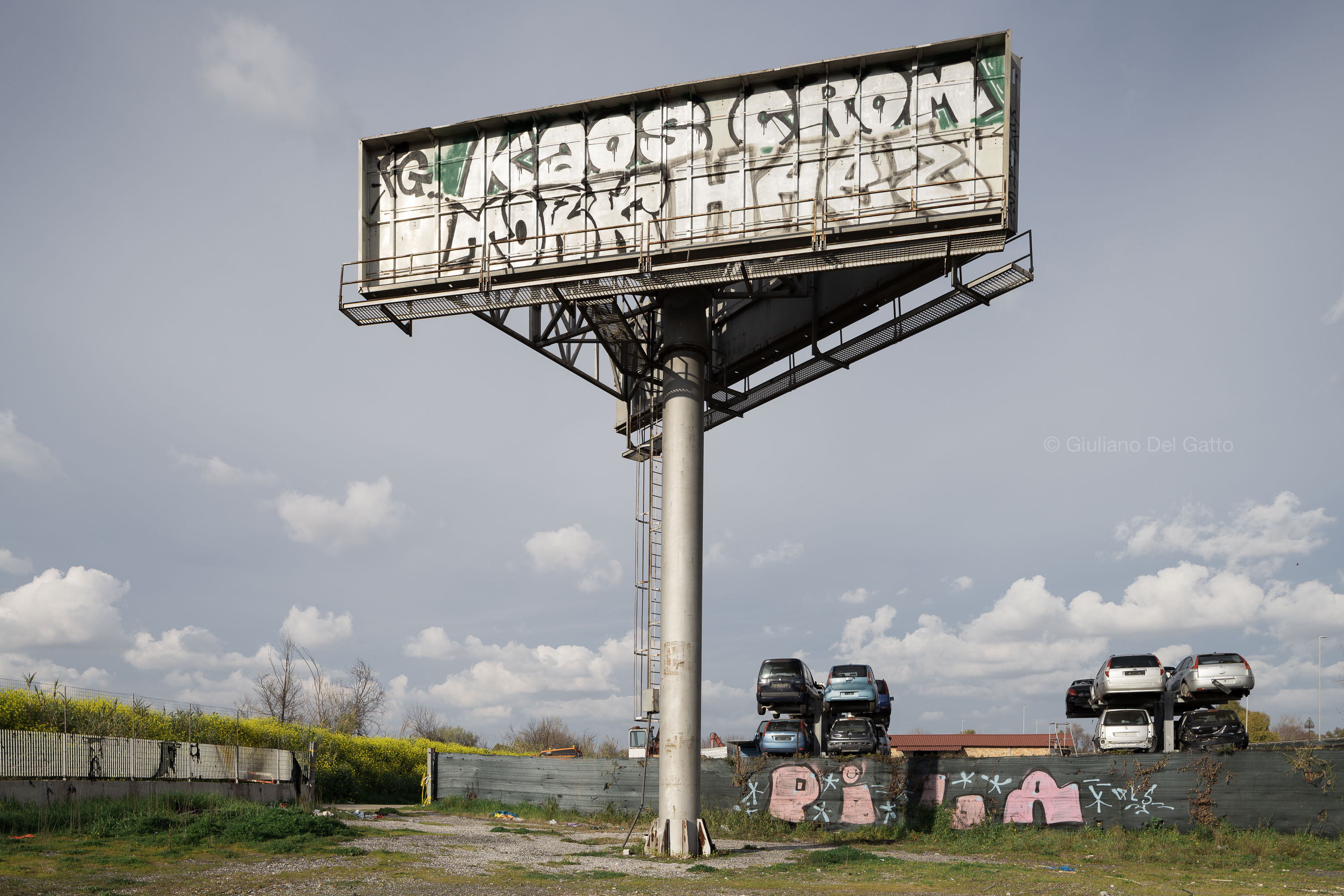


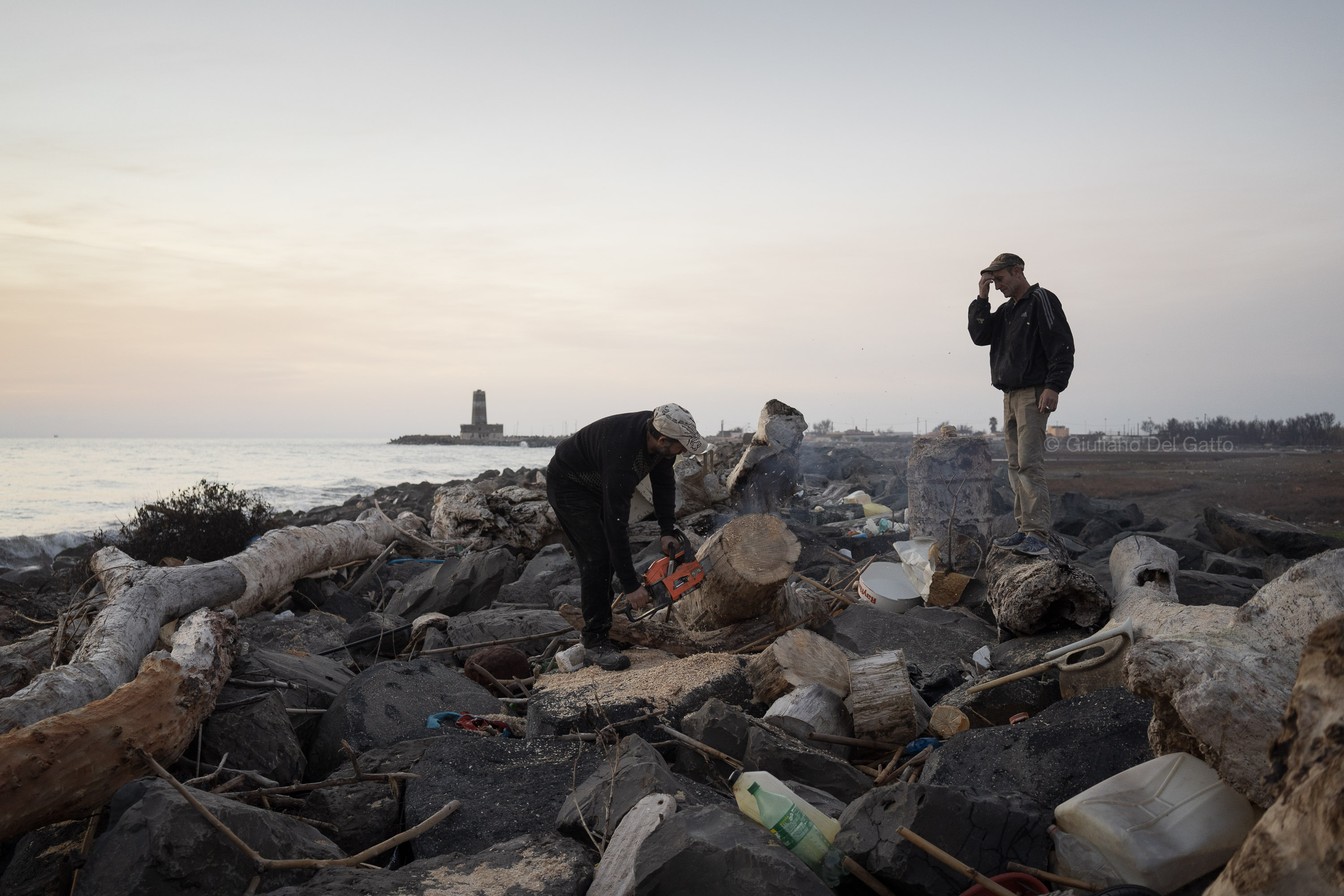



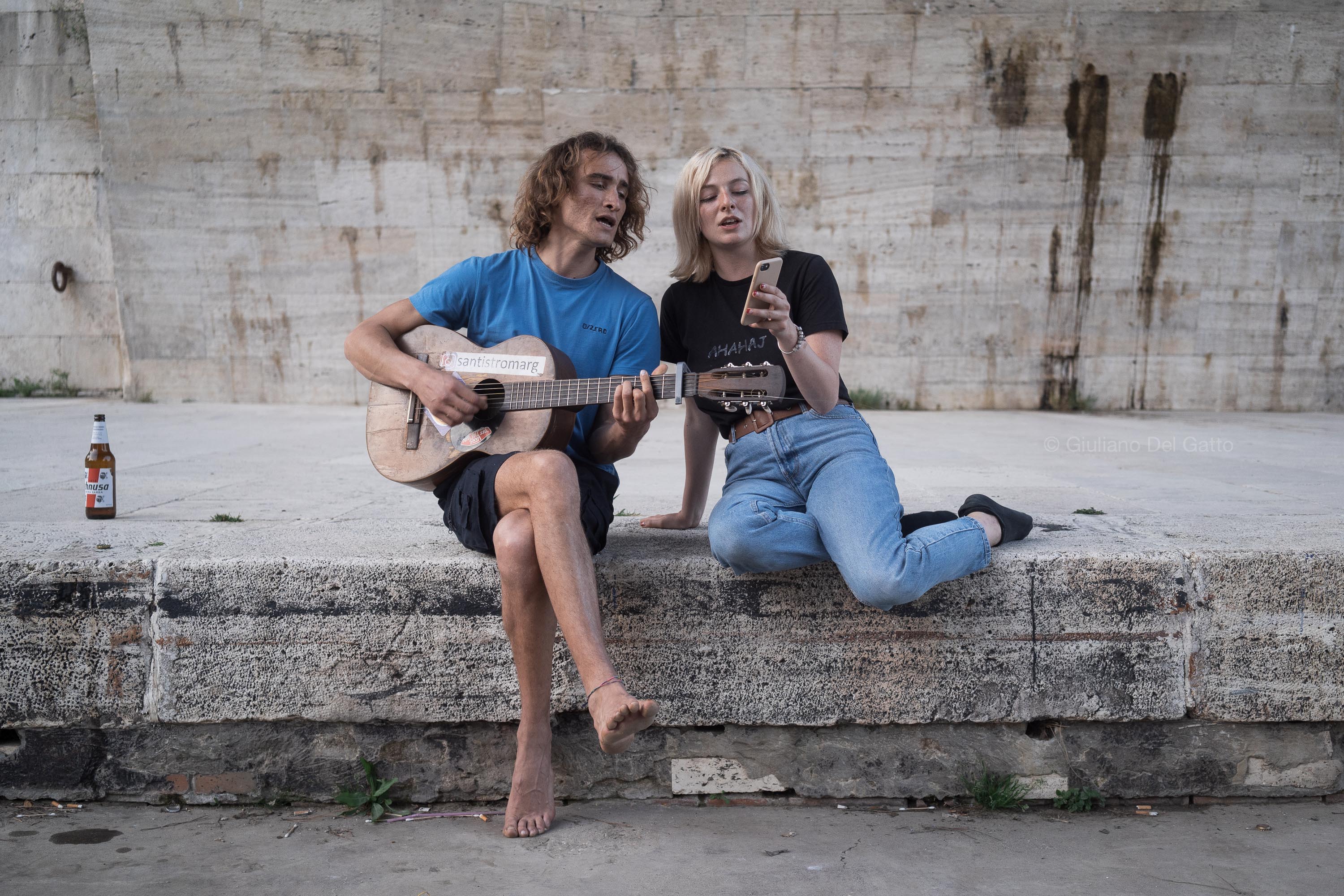




The Tiberians
Rome 2020 - 2021To see more images about this project please visit “The Tiberians” on Parallelozero agency website
ENG - The Tiber, known in ancient times as Albula, then Thybris and finally Tiberis, is Central Italy’s main river. Its stories “unfold at a level beneath that of the Eternal City of Rome, scrutinizing it from below.” (Maria Margarita Segarra Lagunes, Il Tevere e Roma, Storia di una simbiosi).
Its banks still remain places that are wild and hard to access: with the exception of the better known stretch running through the city, the river belongs to a community of marginalized souls who have transformed it into a sort of fascinating, hidden city where infinite personal stories unfold.
Once such location is the small area of the estuary, known as Fiumara Grande or Passo della Sentinella, a “neighbourhood” that is home to around 700 families who over the years have drained the area and requested on a number of occasions the regularization of their living situations and their rights.
In 1933 the land was requisitioned by the state that took it from an aristocratic family to create a radio telegraph centre, but the project never came to fruition and since then its situation has never been fully resolved. Its inhabitants frequently risk having to leave their homes, which in any case are not connected to the sewage system, public lighting and connections to public transport networks.
The area of Isola Sacra is home to Henryk Pawel Chrobok, a Polish sailor and boat builder who has experienced many adventures during his 78 years. He lives on a boat that he is currently building with the aim of sailing to Antarctica. And then there is Gurjeet, an Indian shepherd who doesn’t speak a word of Italian and Rita, a retired architect who lives under a bridge beneath the river.
These are just some of the stories taking place in the urban and rural settings of this green-coloured lined that bisects the millennia-old territory of the Eternal City.
ITA - Il Tevere, conosciuto nell'antichità come Albula, poi Thybris e infine Tiberis, è il principale fiume dell'Italia centrale. Le sue storie "si svolgono a un livello inferiore a quello della città eterna di Roma, scrutando dal suo livello fisico più basso” (Maria Margarita Segarra Lagunes, Il Tevere e Roma, Storia di una simbiosi).
Le sue sponde rimangono ancora luoghi selvaggi e difficilmente accessibili: ad eccezione del tratto più noto che attraversa la città, il fiume appartiene ad una comunità di anime emarginate che lo hanno trasformato in una sorta di città affascinante e nascosta dove scorrono infinite storie personali.
Uno di questi luoghi è la piccola area della foce, nota come Fiumara Grande o Passo della Sentinella, un "quartiere" che ospita circa 700 famiglie che nel corso degli anni hanno prosciugato l'area e richiesto più volte la regolamentazione della loro situazione abitativa e dei loro diritti.
Nel 1933 il terreno fu requisito dallo Stato che lo sottrasse a una famiglia aristocratica per creare un centro di radiotelegrafia, ma il progetto non si realizzò mai e da allora la sua situazione non è mai stata completamente risolta. I suoi abitanti rischiano spesso di dover lasciare le loro case, che in ogni caso non sono collegate alla rete fognaria, all'illuminazione pubblica e ai collegamenti con le reti di trasporto pubblico.
Nella zona di Isola Sacra vive Henryk Pawel Chrobok, un marinaio e costruttore di barche polacco che ha vissuto molte avventure durante i suoi 78 anni. E poi c'è Gurjeet, un pastore indiano che non parla una parola di italiano e Rita, un architetto in pensione che vive sotto un ponte sotto il fiume.
Queste alcune delle vicende che scorrono lungo lo scenario urbano e extra urbano di questa linea color verde che divide a metà il territorio millenario della città eterna.







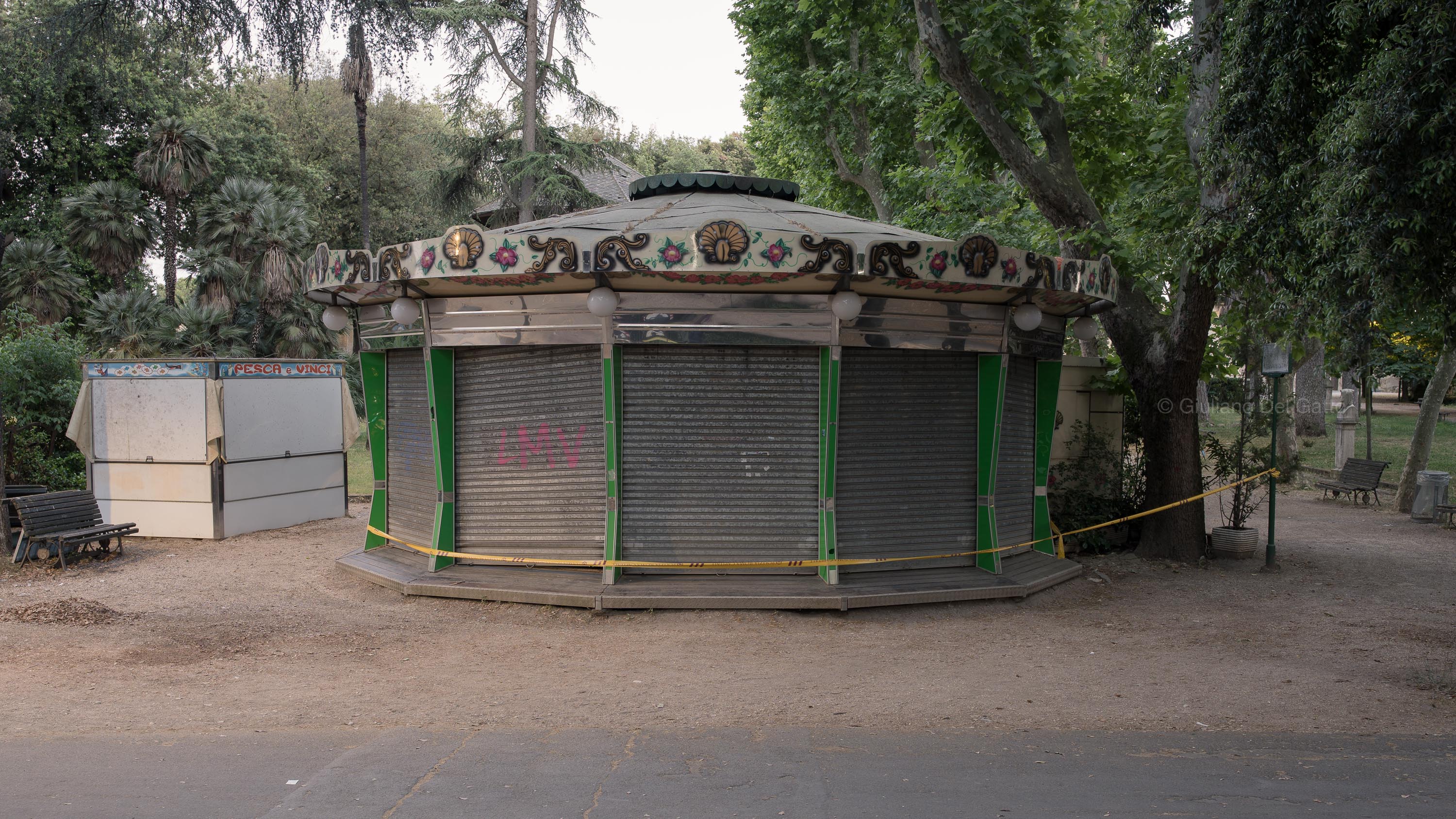




Unplayed
Rome May 2020ENG - On May 4th in Rome, as well as in the rest of Italy, the public parks reopened, previously closed at the beginning of the lockdown to stem the spread of the corona virus.
Citizens are finally free to access the green areas by complying with the ban on gatherings and the inter-personal distance of at least one metre.
However, some areas inside the parks are still forbidden, such as areas equipped for children's play, benches, sports equipment and areas where it is not possible to maintain social distance or to avoid the gathering.
These urban spaces normally associated with social and carefree outdoor life are now portrayed as desolate and suspended places through which traces of virus threaten a new series of contagions.
Citizens are finally free to access the green areas by complying with the ban on gatherings and the inter-personal distance of at least one metre.
However, some areas inside the parks are still forbidden, such as areas equipped for children's play, benches, sports equipment and areas where it is not possible to maintain social distance or to avoid the gathering.
These urban spaces normally associated with social and carefree outdoor life are now portrayed as desolate and suspended places through which traces of virus threaten a new series of contagions.
ITA - Il 4 maggio a Roma, così come nel resto d'Italia, hanno riaperto i parchi pubblici, precedentemente chiusi all'inizio del blocco per arginare la diffusione del virus corona. I cittadini sono finalmente liberi di accedere alle aree verdi rispettando il divieto di assembramento e la distanza interpersonale di almeno un metro. Tuttavia, alcune zone all'interno dei parchi sono ancora vietate, come le aree attrezzate per il gioco dei bambini, le panchine, le attrezzature sportive e le aree in cui non è possibile mantenere la distanza sociale o evitare l'assembramento.Questi spazi urbani normalmente associati alla vita sociale e spensierata all'aperto sono ora ritratti come luoghi desolati e sospesi attraverso i quali tracce di virus minacciano una nuova serie di contagi.
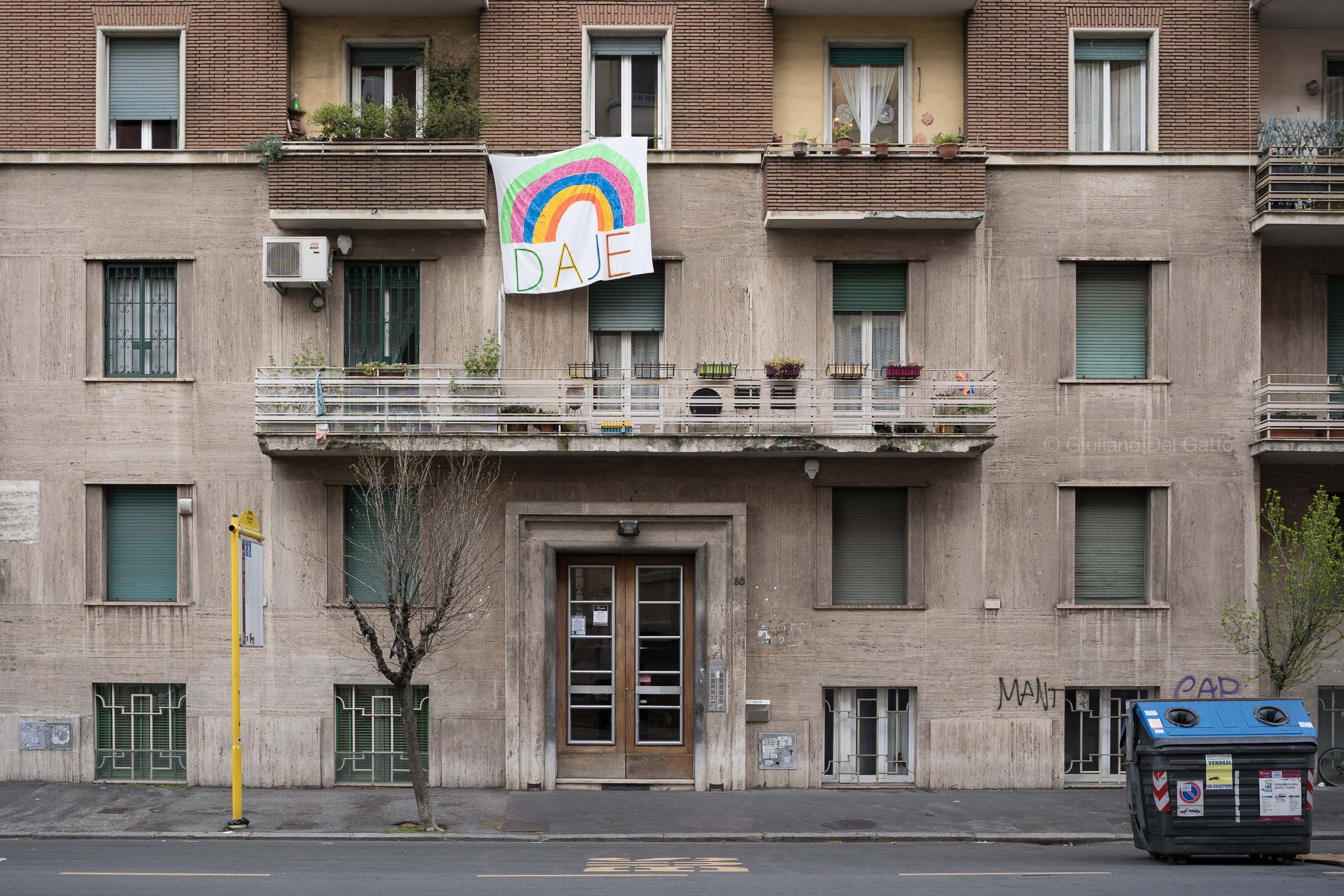

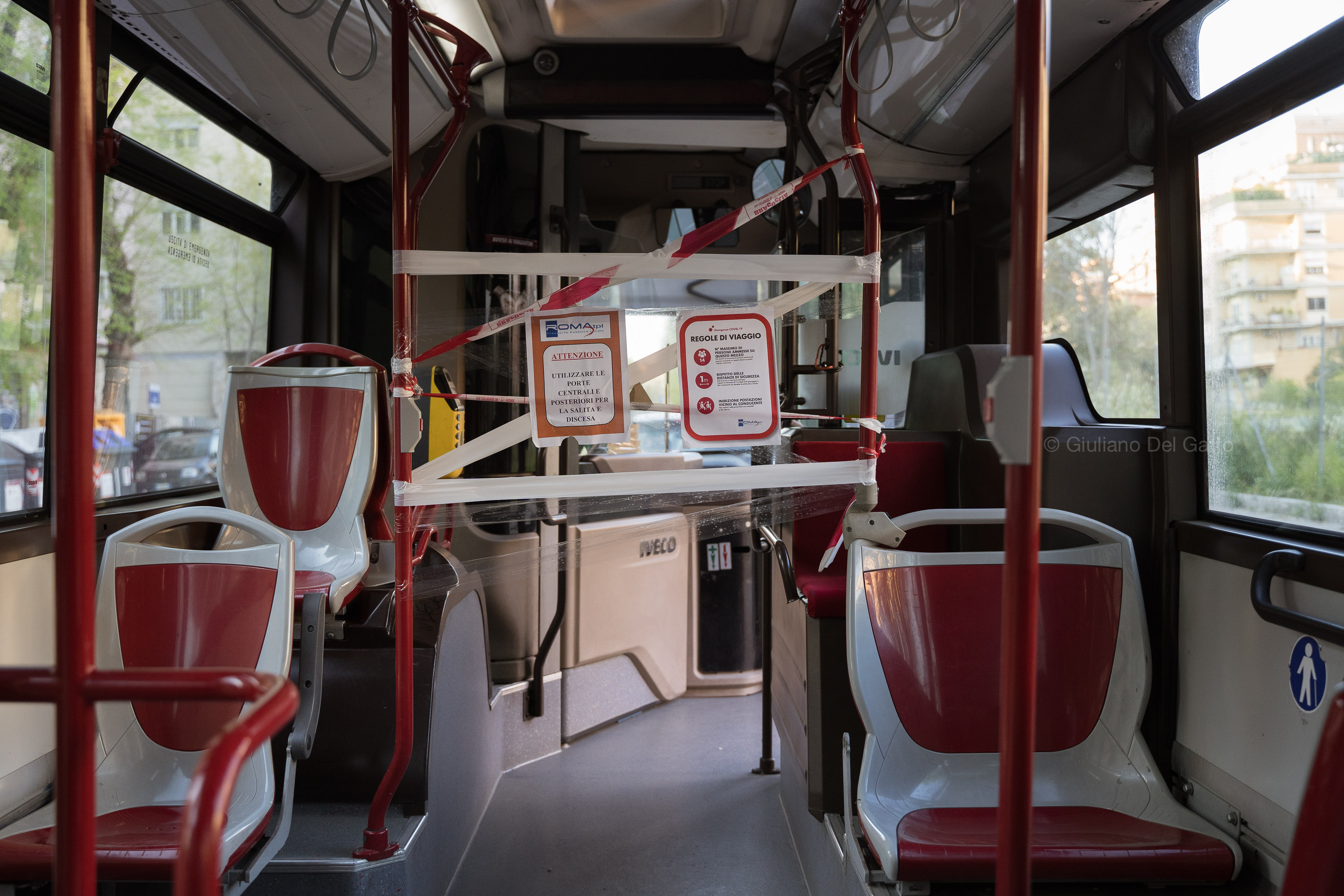
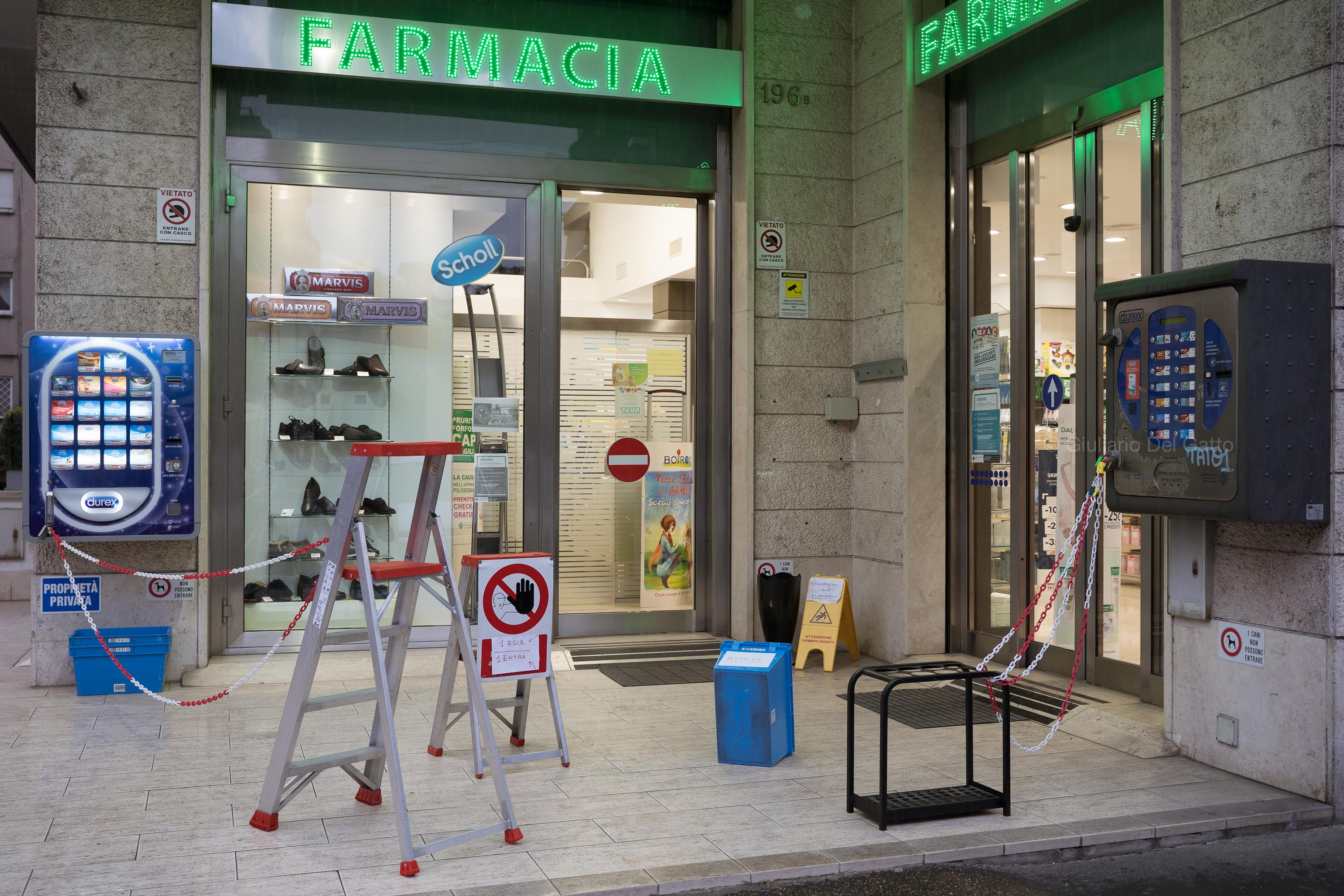
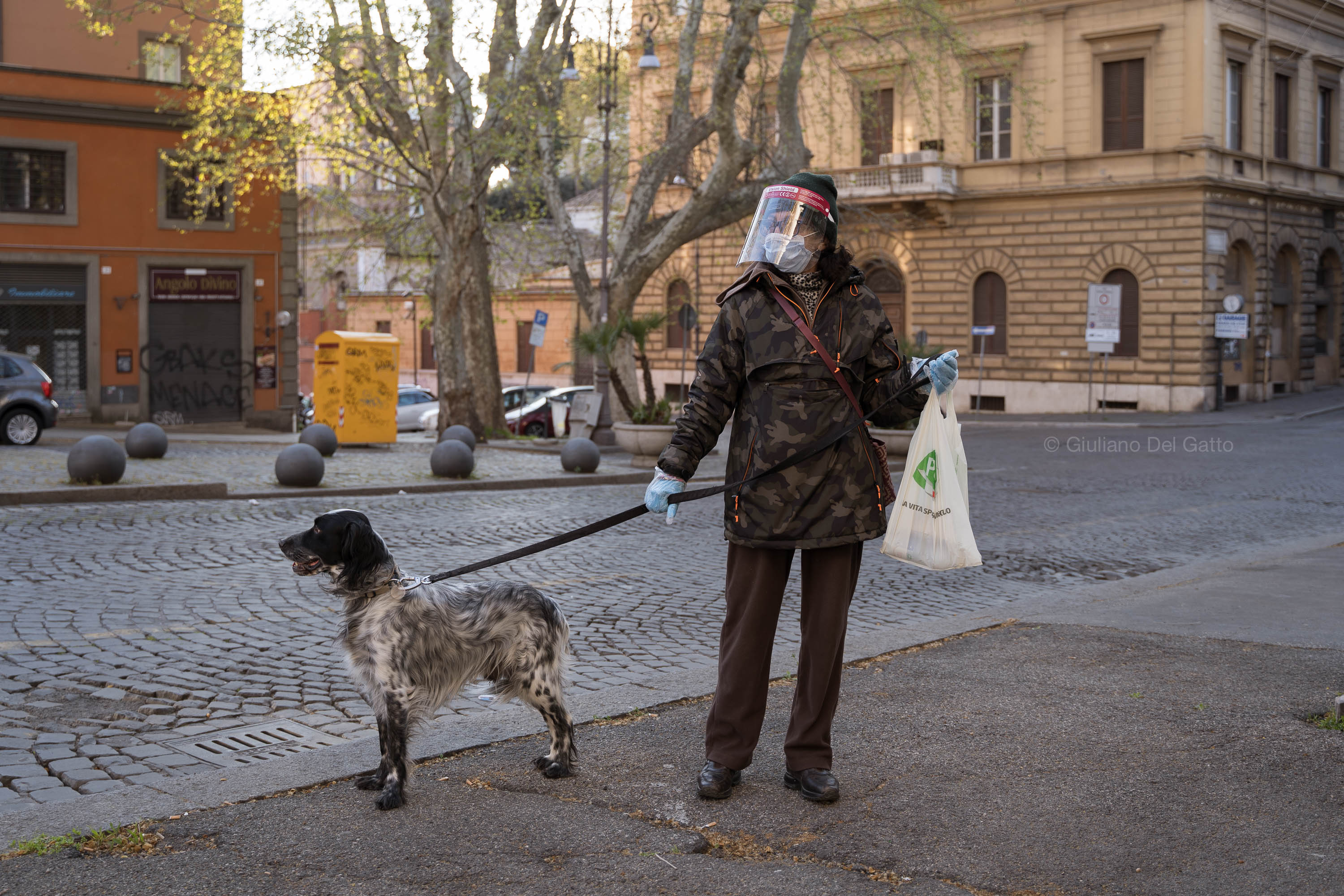

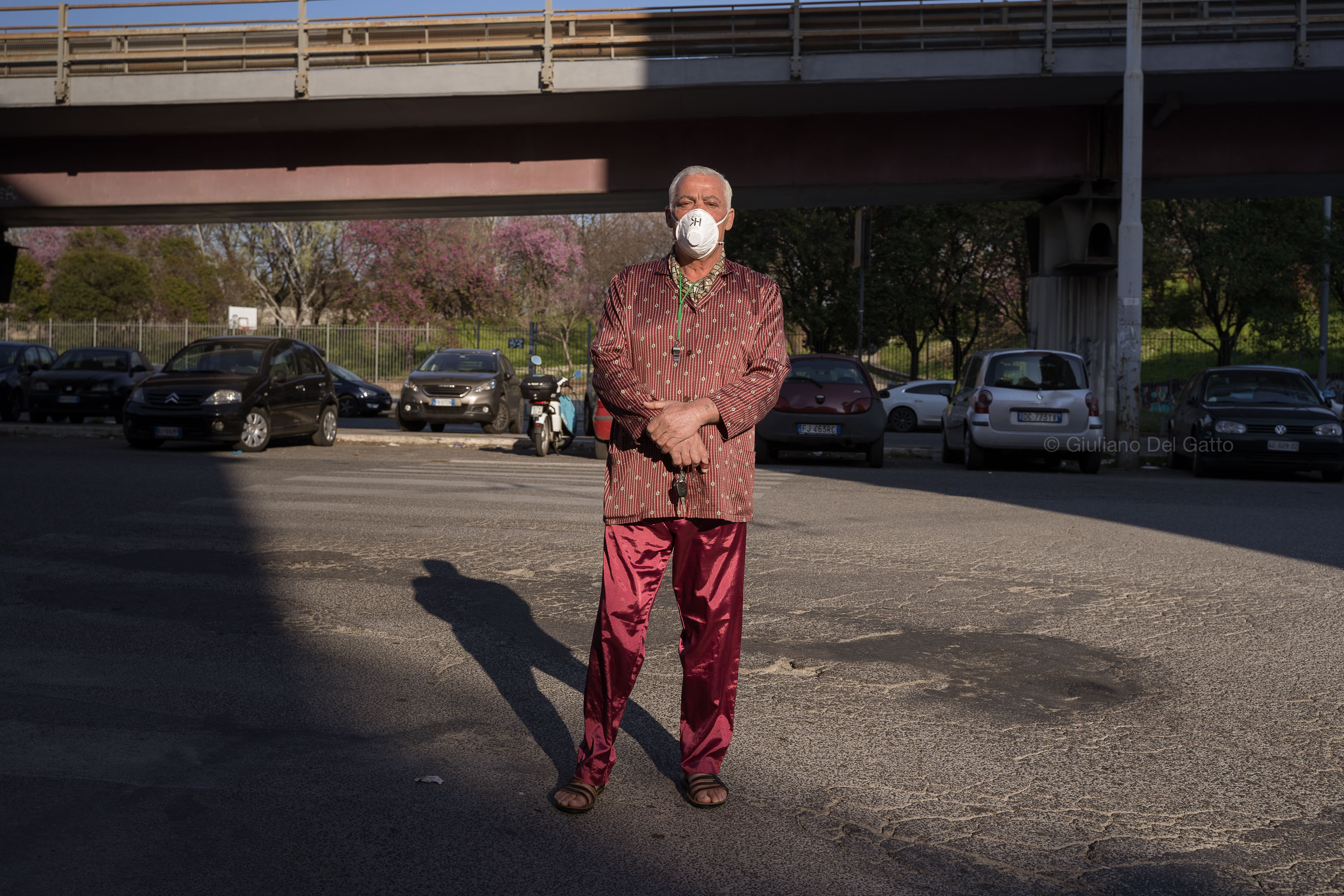
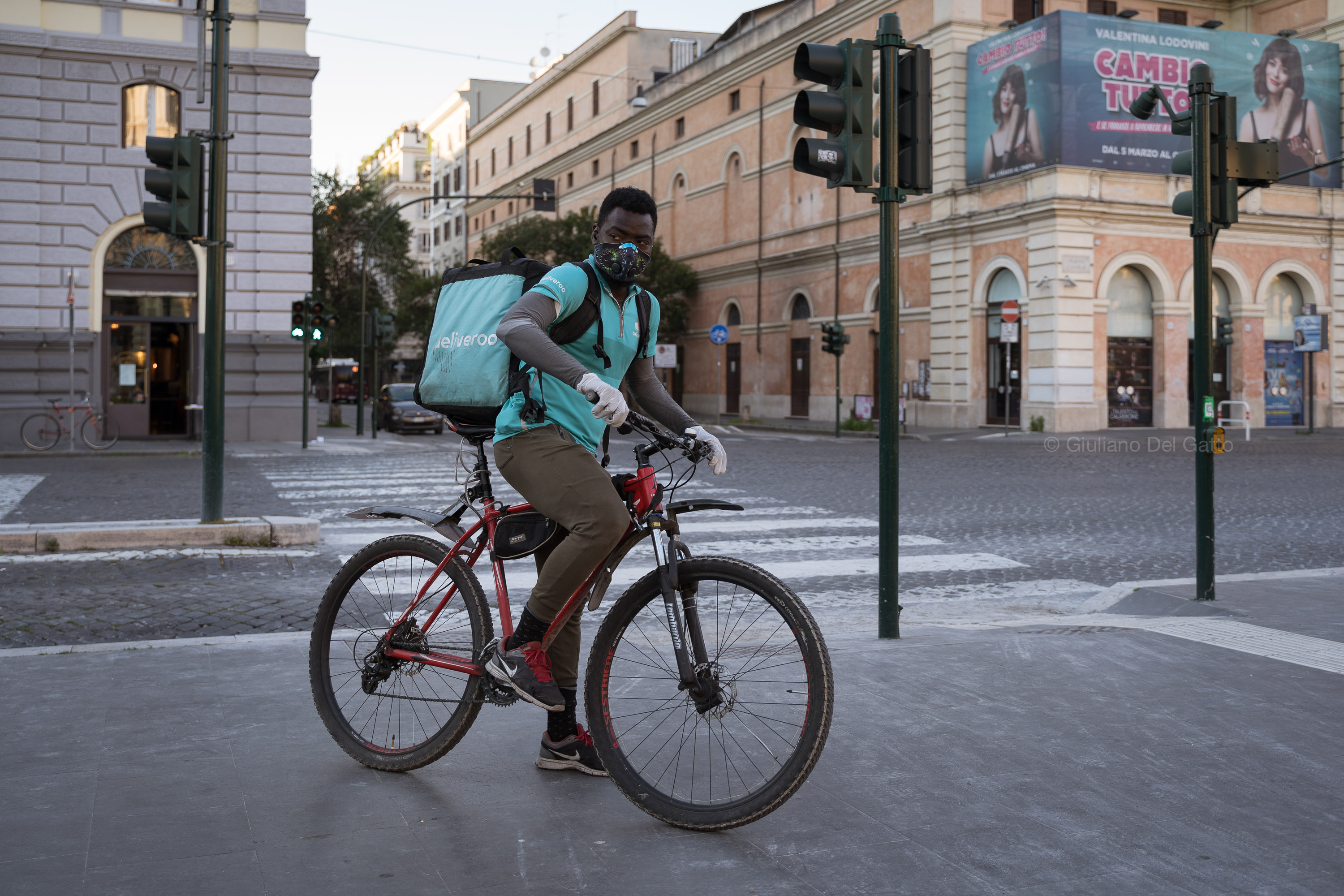
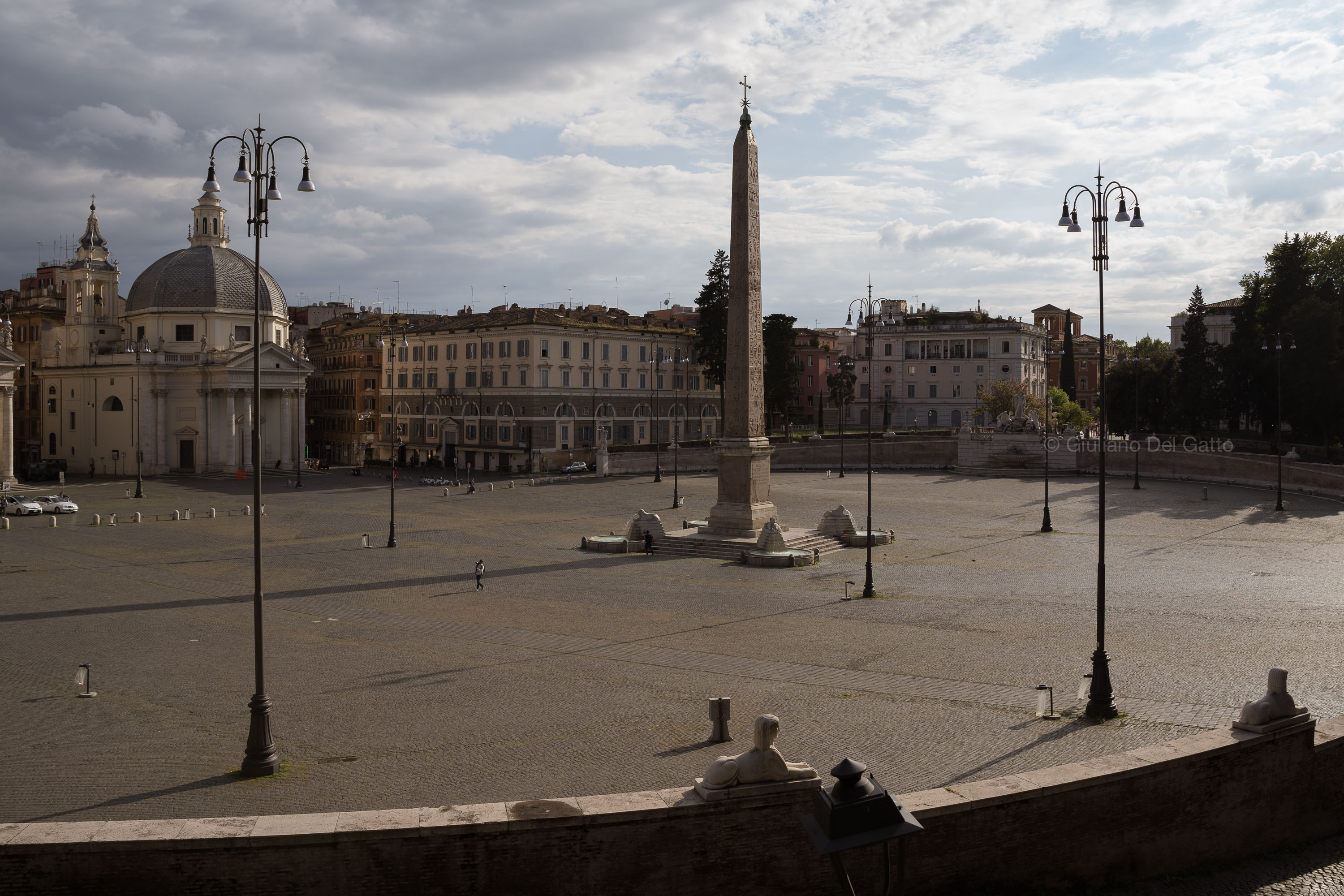
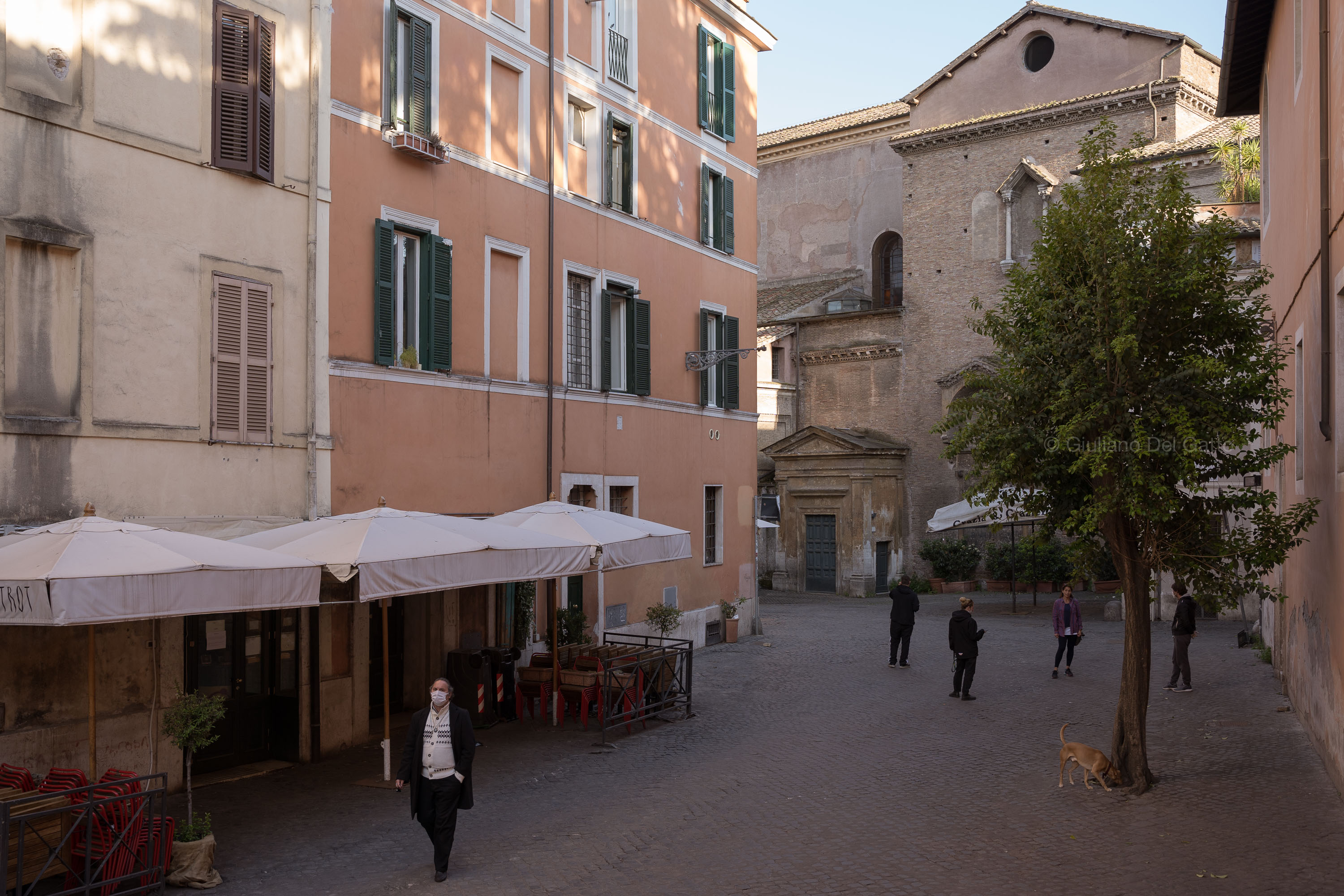
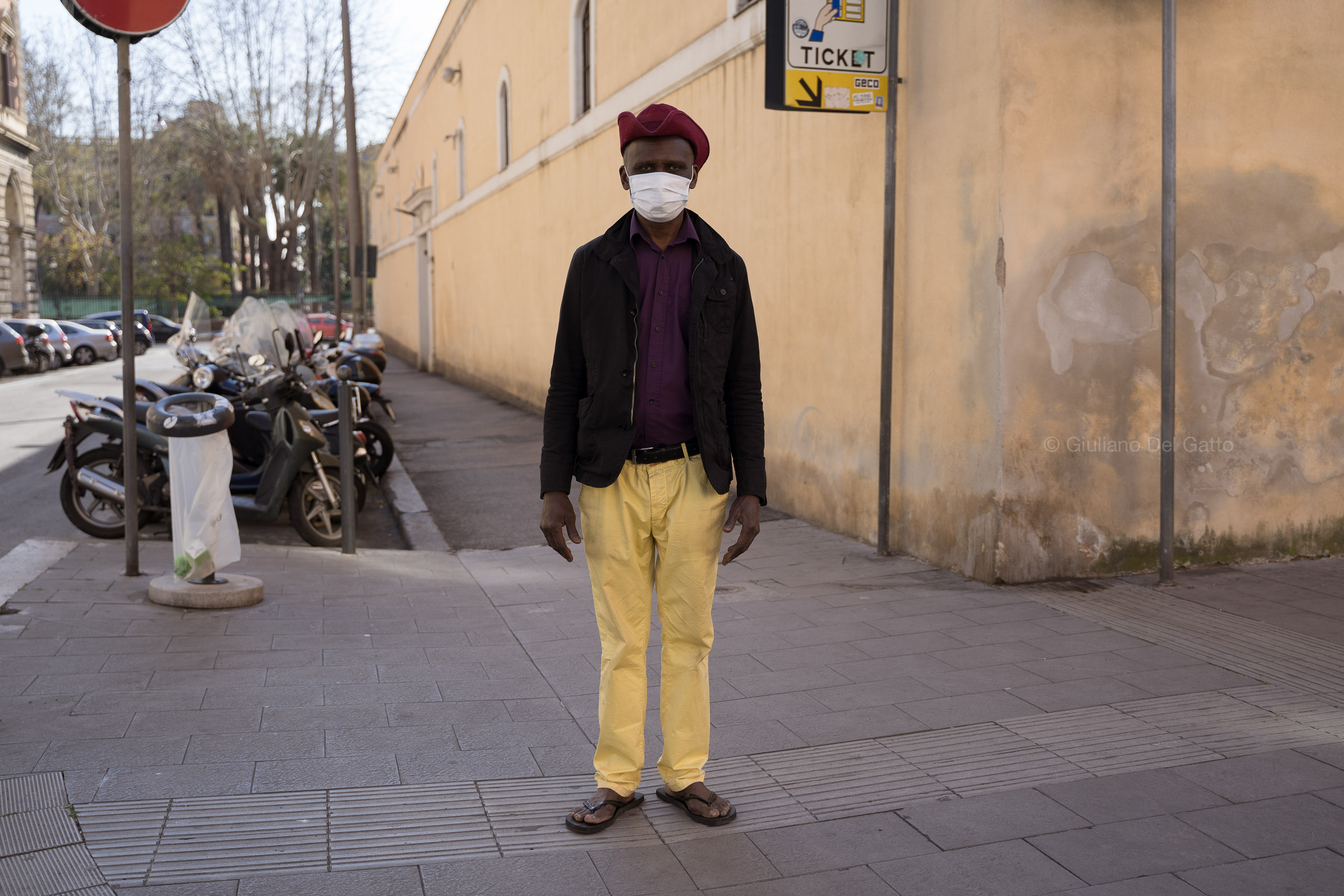
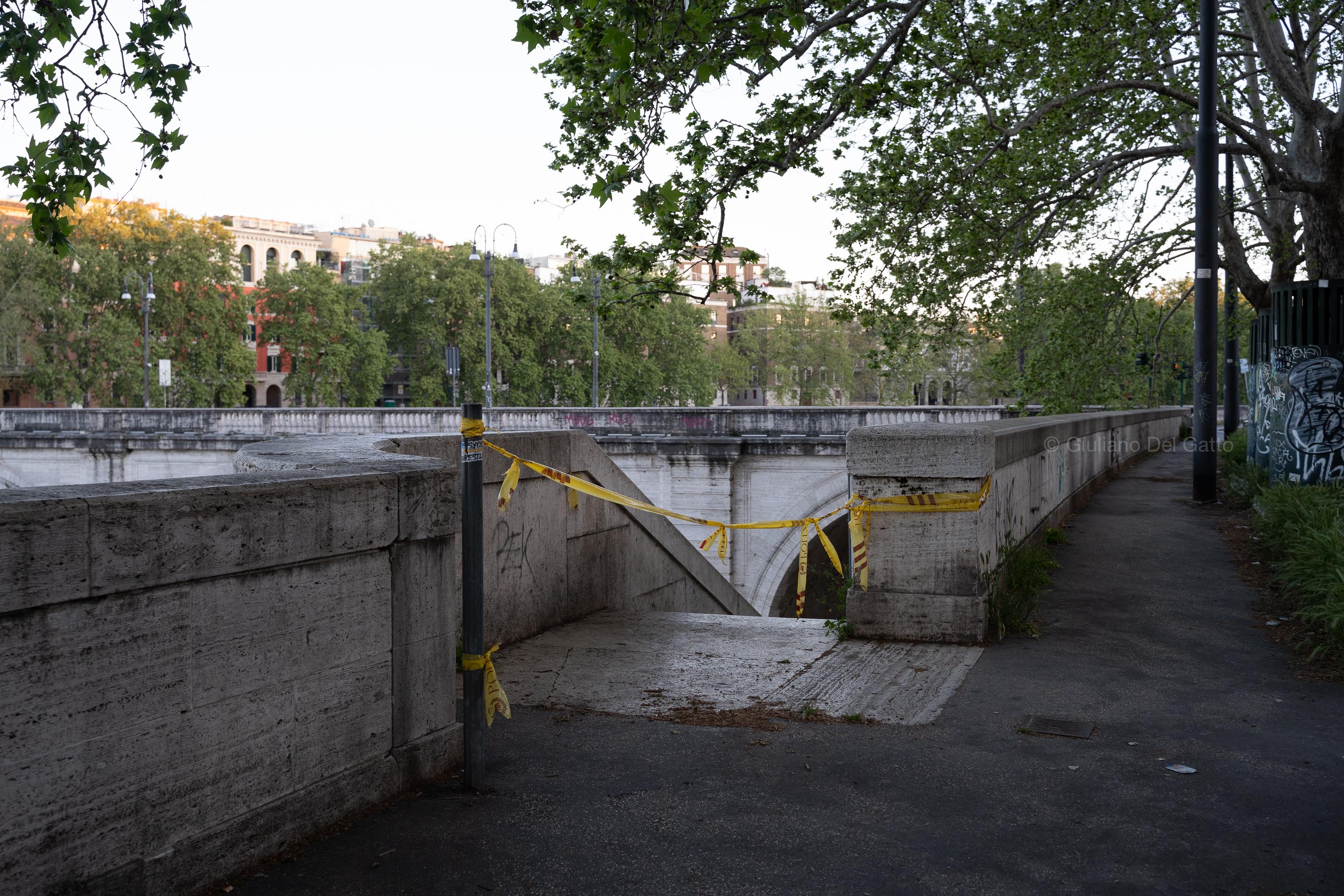

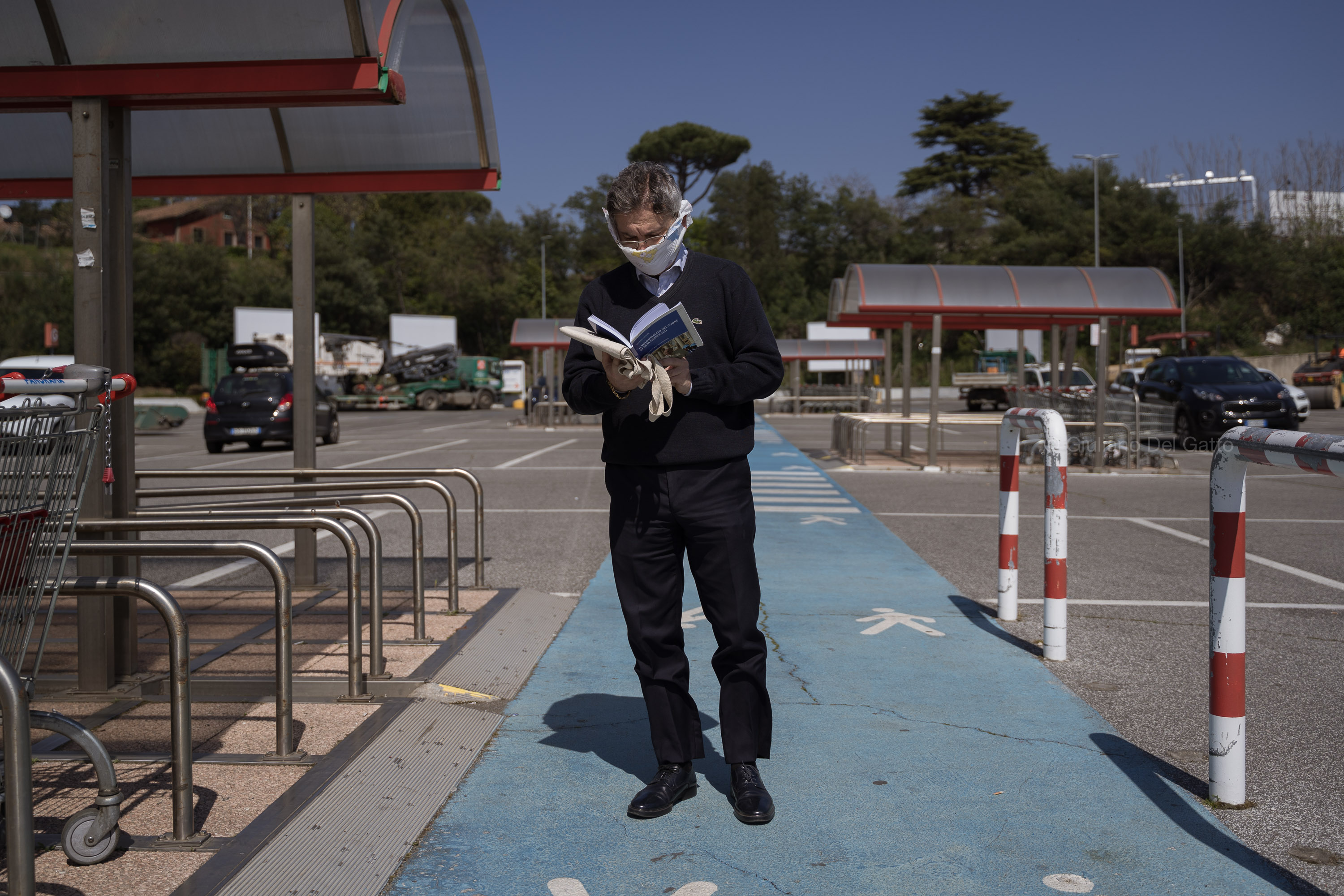
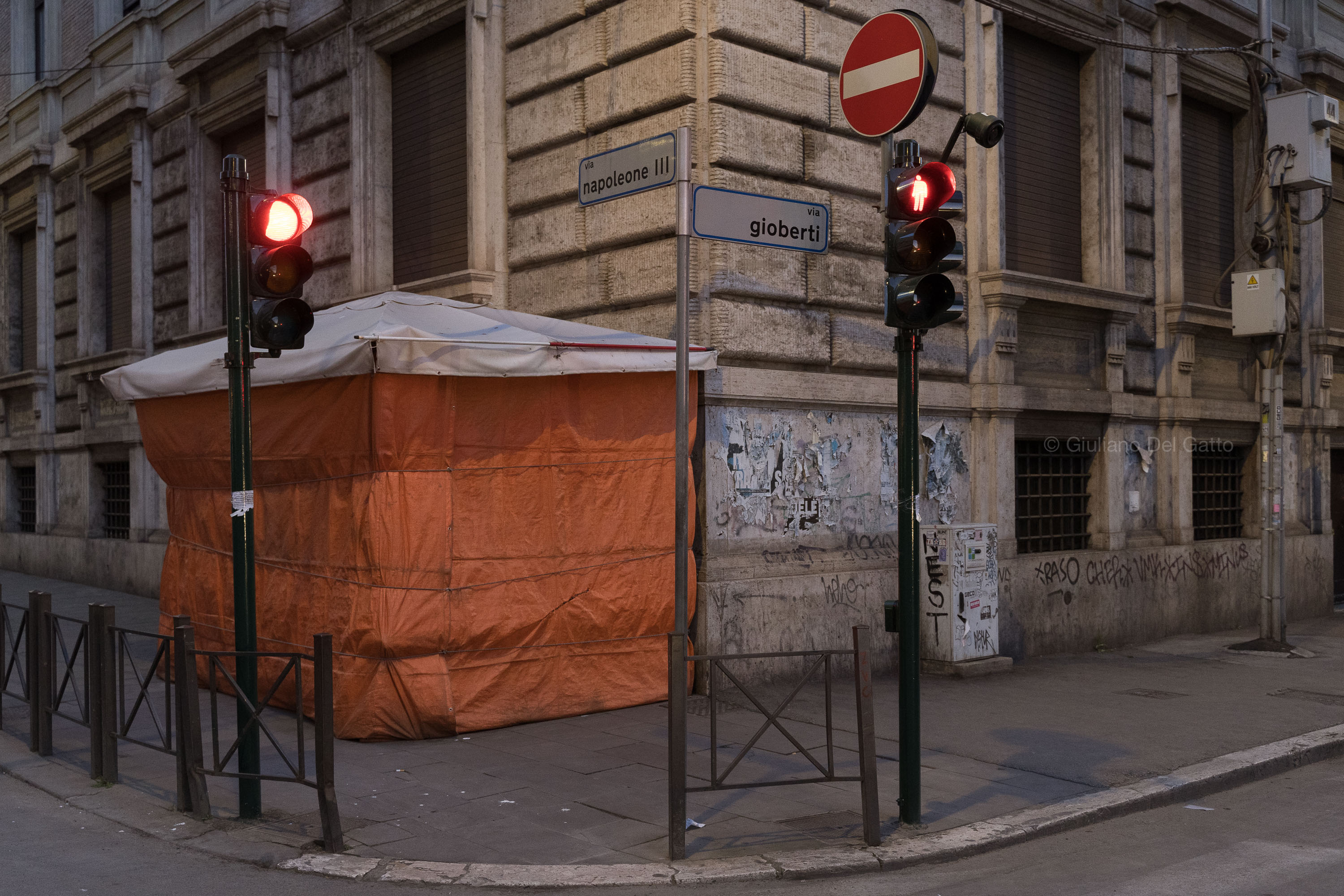

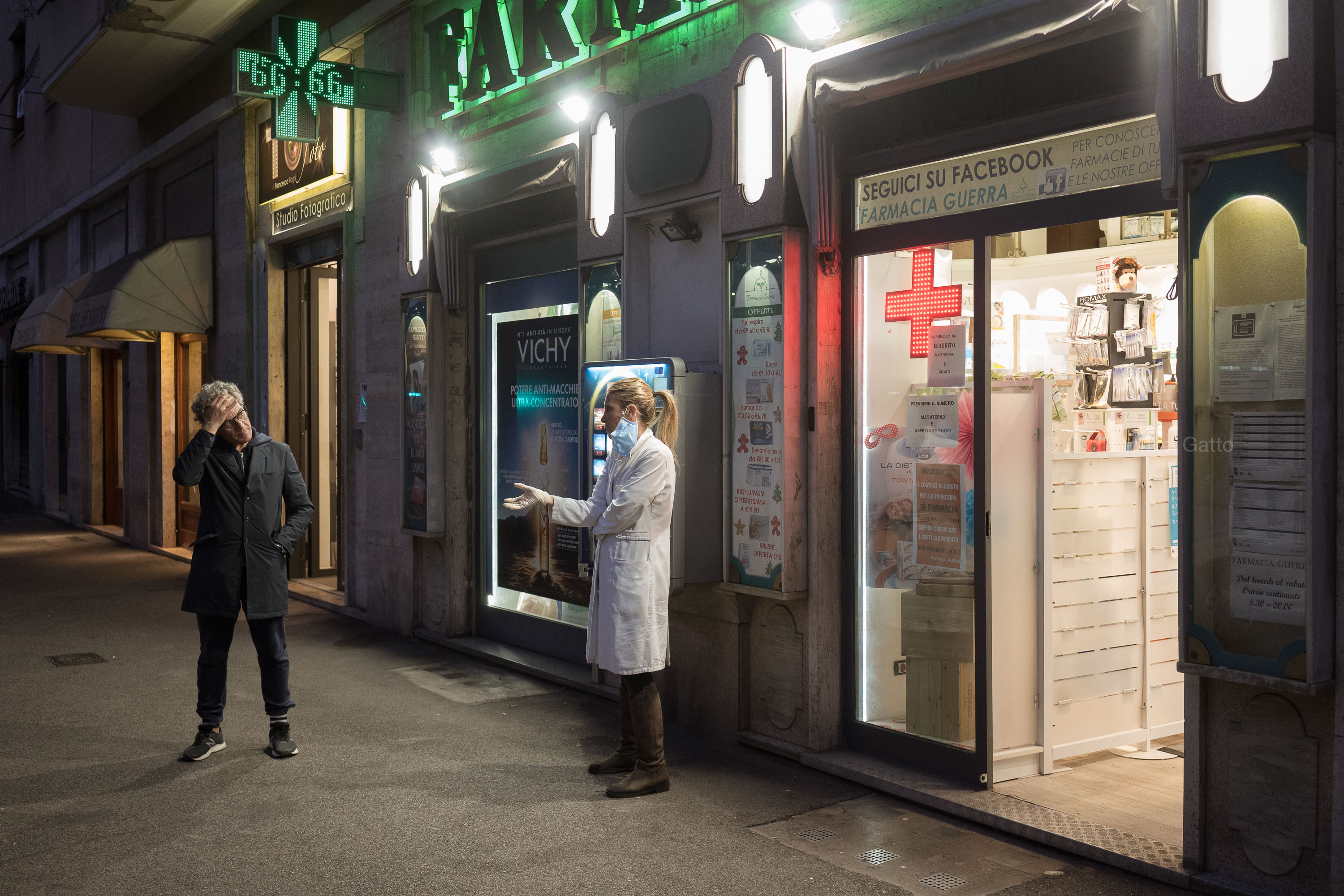
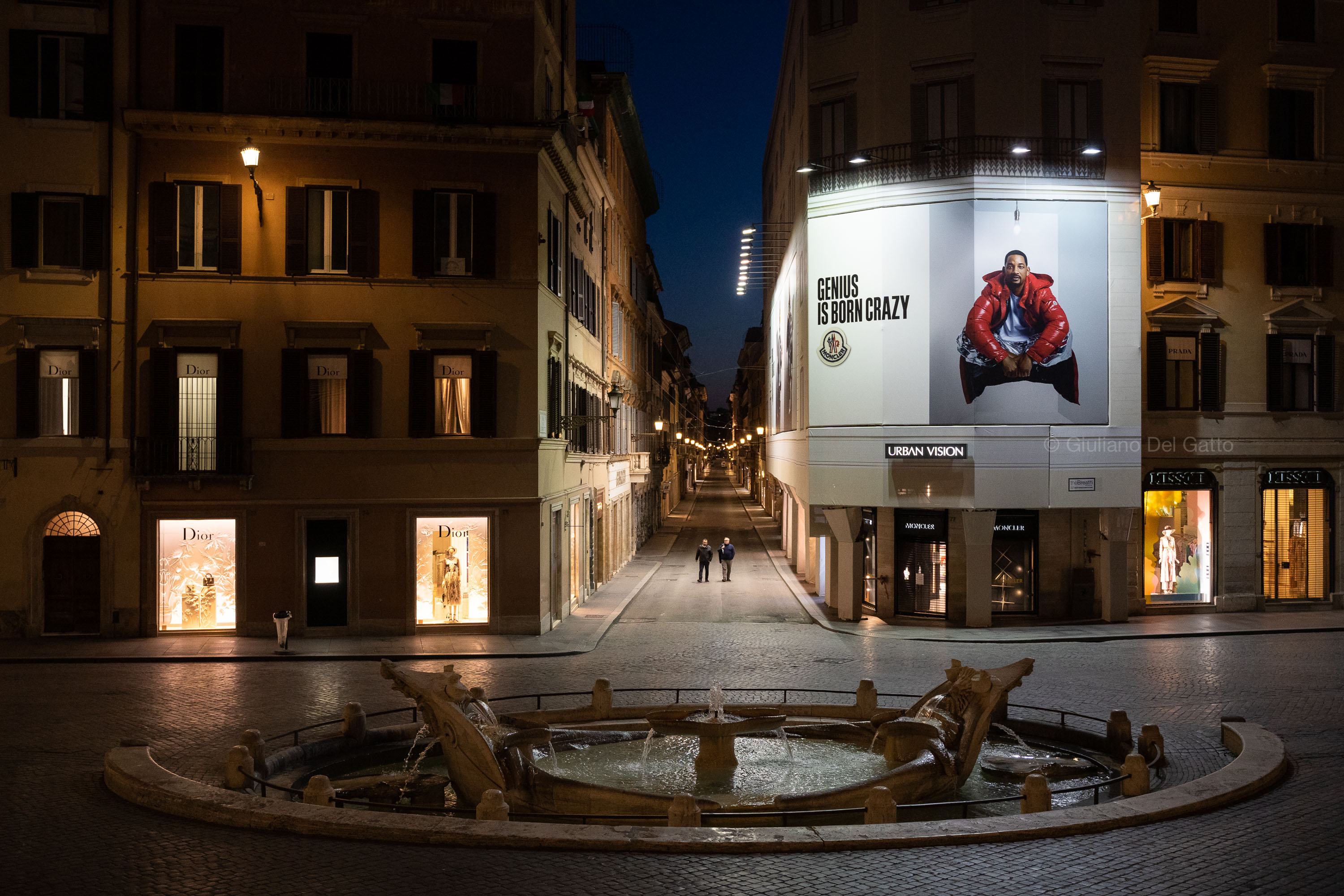
Lockdown
Rome March - April 2020ENG - On March 11th 2020, the World Health Organization declared that the diffusion of virus COVID-19 can be characterized as a pandemic.
For the first time since the end of the Second World War, the Italian government was forced to restrict certain fundamental freedoms guaranteed by the Constitution, in particular freedom of movement and residence (Article 16), freedom of assembly (Article 17) in its various forms. Moreover, with the spread of the virus, social distancing measures have become even more important, gradually increased by successive measures, leading to a gradual emptying of the streets of Rome.
Road and distance were the two recurrent elements in this photographic investigation; spatial coordinates within which I chose to move to observe how the hectic life of the city was adapting to the decrees imposed by the government.What could have been a dystopia told only in science fiction films, seems to have been a new reality today, which could permanently change our lives.
For the first time since the end of the Second World War, the Italian government was forced to restrict certain fundamental freedoms guaranteed by the Constitution, in particular freedom of movement and residence (Article 16), freedom of assembly (Article 17) in its various forms. Moreover, with the spread of the virus, social distancing measures have become even more important, gradually increased by successive measures, leading to a gradual emptying of the streets of Rome.
Road and distance were the two recurrent elements in this photographic investigation; spatial coordinates within which I chose to move to observe how the hectic life of the city was adapting to the decrees imposed by the government.What could have been a dystopia told only in science fiction films, seems to have been a new reality today, which could permanently change our lives.
ITA - L'11 marzo 2020, l'Organizzazione Mondiale della Sanità ha dichiarato che la diffusione del virus COVID-19 può essere caratterizzata come una pandemia. Per la prima volta dalla fine della seconda guerra mondiale, il governo italiano è stato costretto a limitare alcune libertà fondamentali garantite dalla Costituzione, in particolare la libertà di circolazione e di soggiorno (articolo 16), la libertà di riunione (articolo 17) nelle sue varie forme. Inoltre, con la diffusione del virus, sono diventate ancora più importanti le misure di allontanamento sociale, gradualmente aumentate da provvedimenti successivi, che hanno portato ad un progressivo svuotamento delle strade di Roma. Strada e distanza sono stati i due elementi ricorrenti in questa indagine fotografica; coordinate spaziali all'interno delle quali ho scelto di muovermi per osservare come la vita frenetica della città si stesse adattando ai decreti imposti dal governo. Quella che poteva essere una distopia raccontata solo nei film di fantascienza, sembra essere oggi una nuova realtà, che potrebbe cambiare definitivamente le nostre vite.













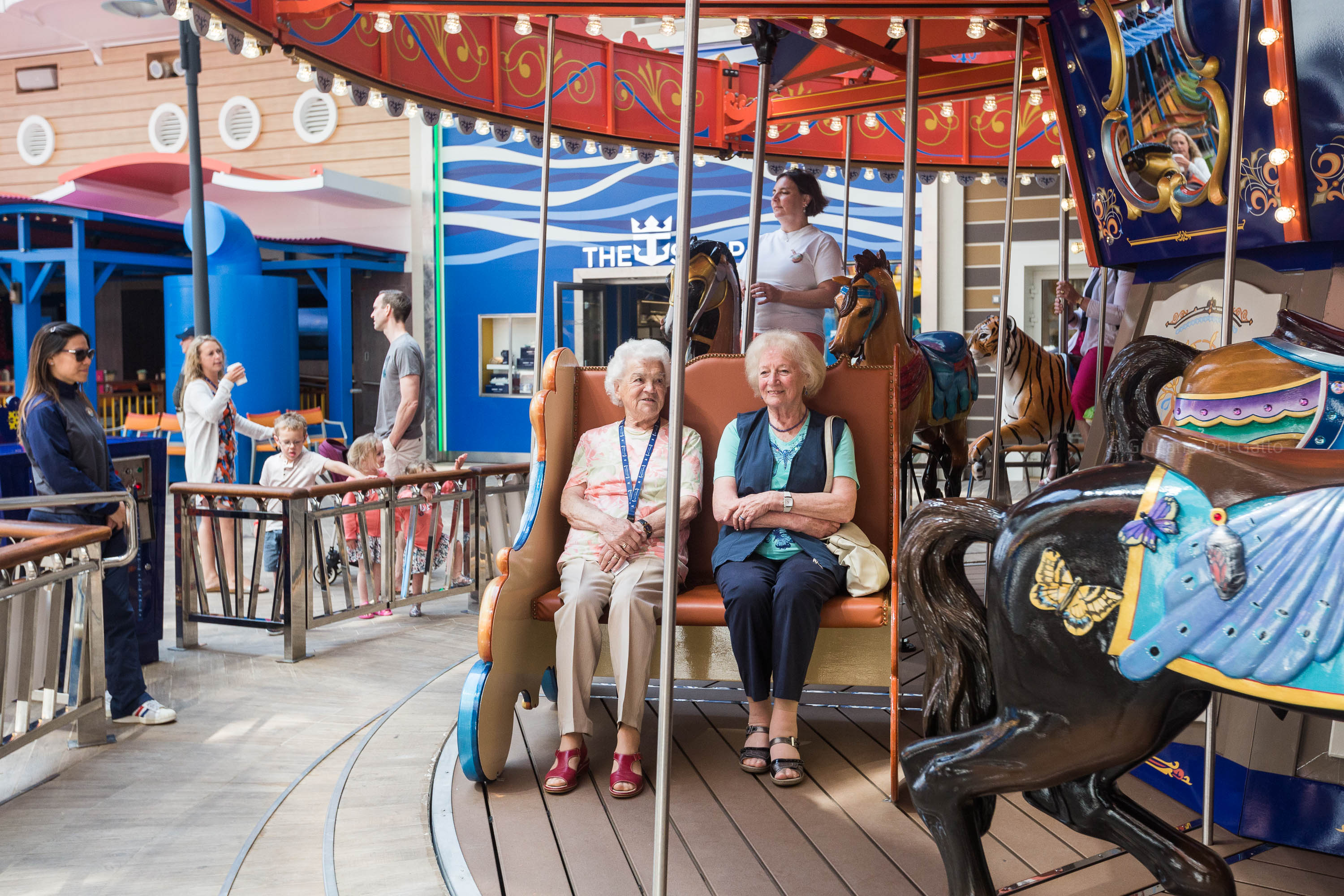
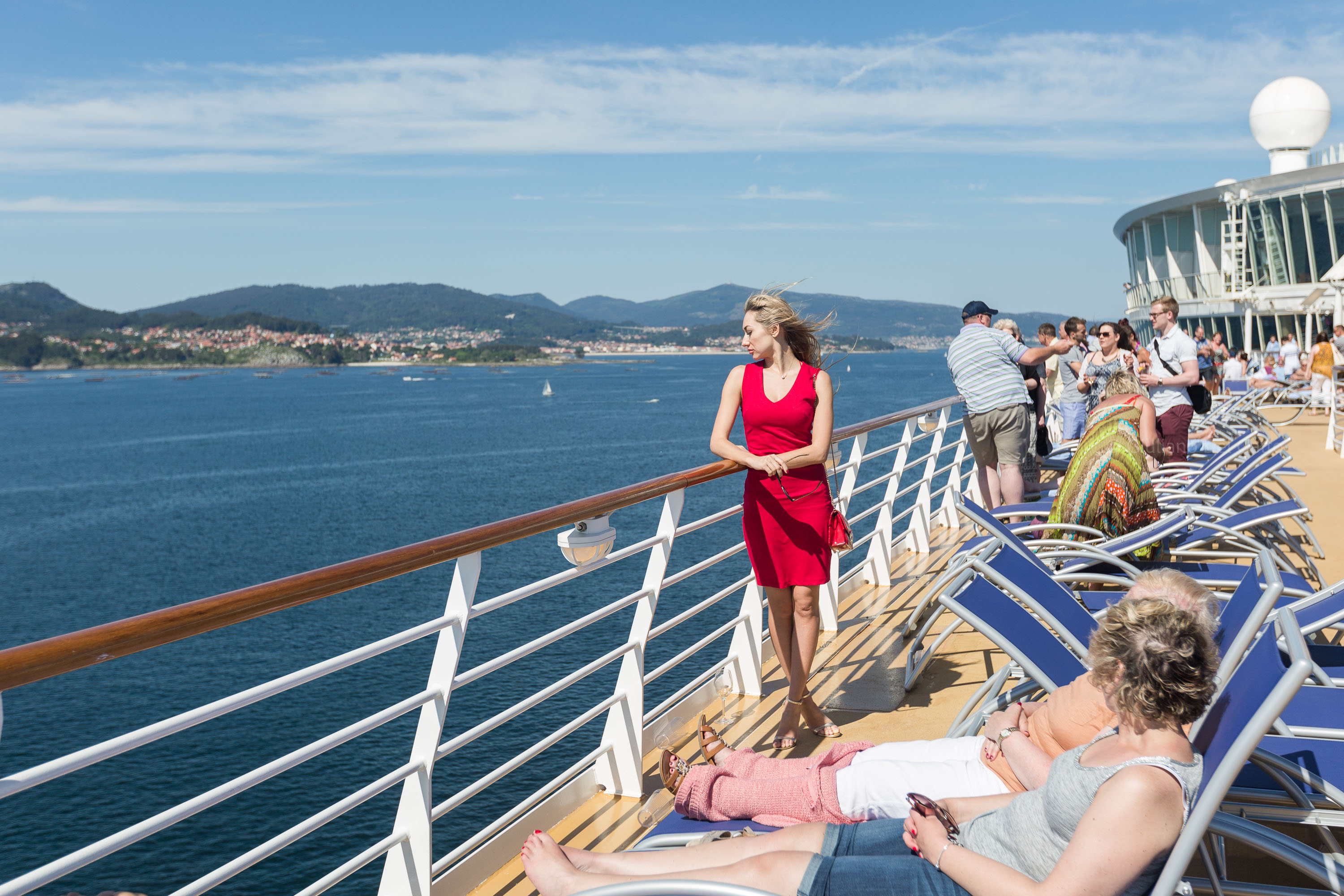

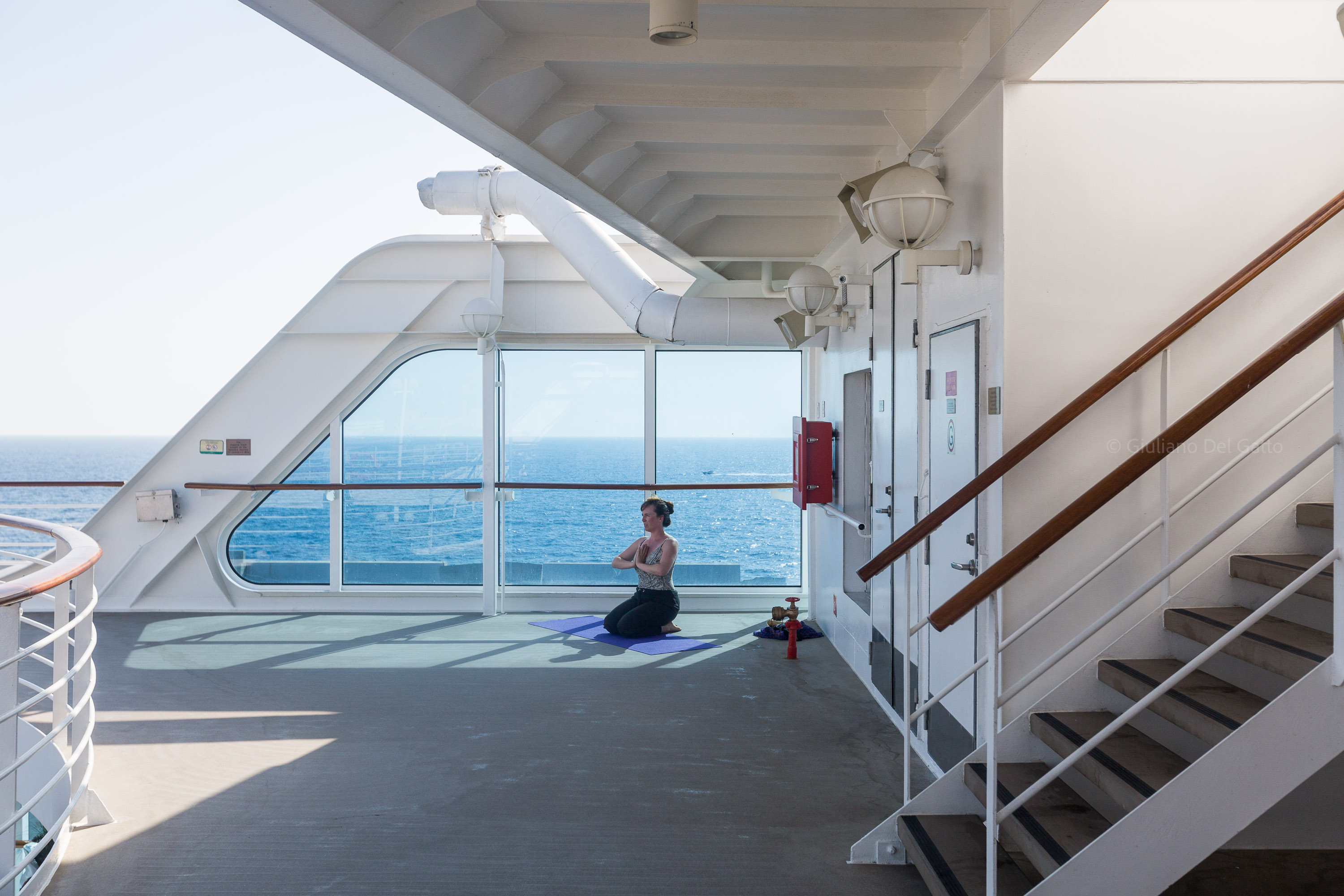
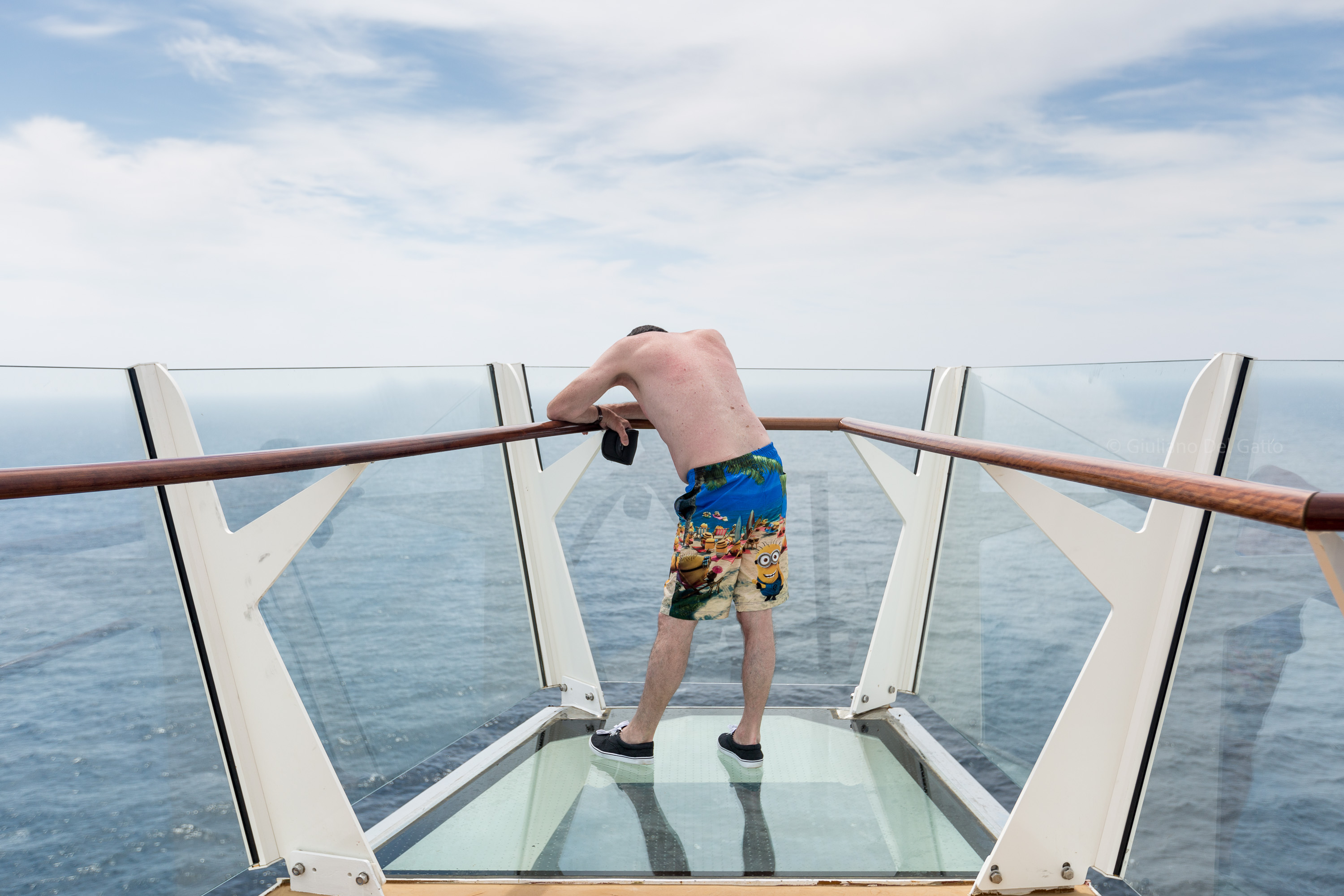










Tourists On Cruise
June 2015 - January 2019ENG - Following my curiosity and interests for the world of tourism I documented life on different cruise ships, during my work for Tripadvisor. The sensation of being on a huge cruise ship in the middle of the sea I immagine it could be like a space travel on a space ship aimed to the exploration. In a certain way it's like exploring human activities and behaviors on such a unique environment. Cruise ship vacation have being widely missunderstood in the years. I think everyone could find its own dimension on board. Imagine being in the middle of nowhere with a 360 degree sea view all the time! Yes a lot of people around you, but there is also enough space for everyone
ITA - Seguendo la mia curiosità per il mondo del turismo ho documentato la vita su diverse navi da crociera, durante il mio lavoro per Tripadvisor. La sensazione di trovarsi su un'enorme nave da crociera in mezzo al mare la immagino come un viaggio spaziale su un'astronave volta all'esplorazione. In un certo senso è come esplorare le attività e i comportamenti umani in un ambiente così unico. Le vacanze in nave da crociera sono state fraintese negli anni. Credo che a bordo ognuno possa trovare la propria dimensione. Immaginate di essere in mezzo al nulla con una vista sul mare a 360 gradi per tutto il tempo! Sì, c'è molta gente intorno a voi, ma c'è anche spazio a sufficienza per tutti.